Весеннее путешествие по Италии. Часть 1. Тренто > > >
На второй день мы знакомым маршрутом двинулись на вокзал и через 40 минут уже были в Мантуе, знакомой нам по трагедии " Ромео и Джульетта" (" Чтоб осветить твой путь до Мантуи огнем факелоносца" ).
Сегодня Мантуя – это город, окруженный озерами и рекой Минча, в Средние века специально с целью обороны реку запрудили, раньше и вовсе Мантуя представляла собой остров, сейчас с " большой Землей" связывают несколько мостов, в т. ч. железнодорожный.
Мантуя очень живописный город, в 2018 г. по исследованию итальянских экологов был признан самым зеленым городом Италии.
Тротуары города часто представляют собой крытые галереи:
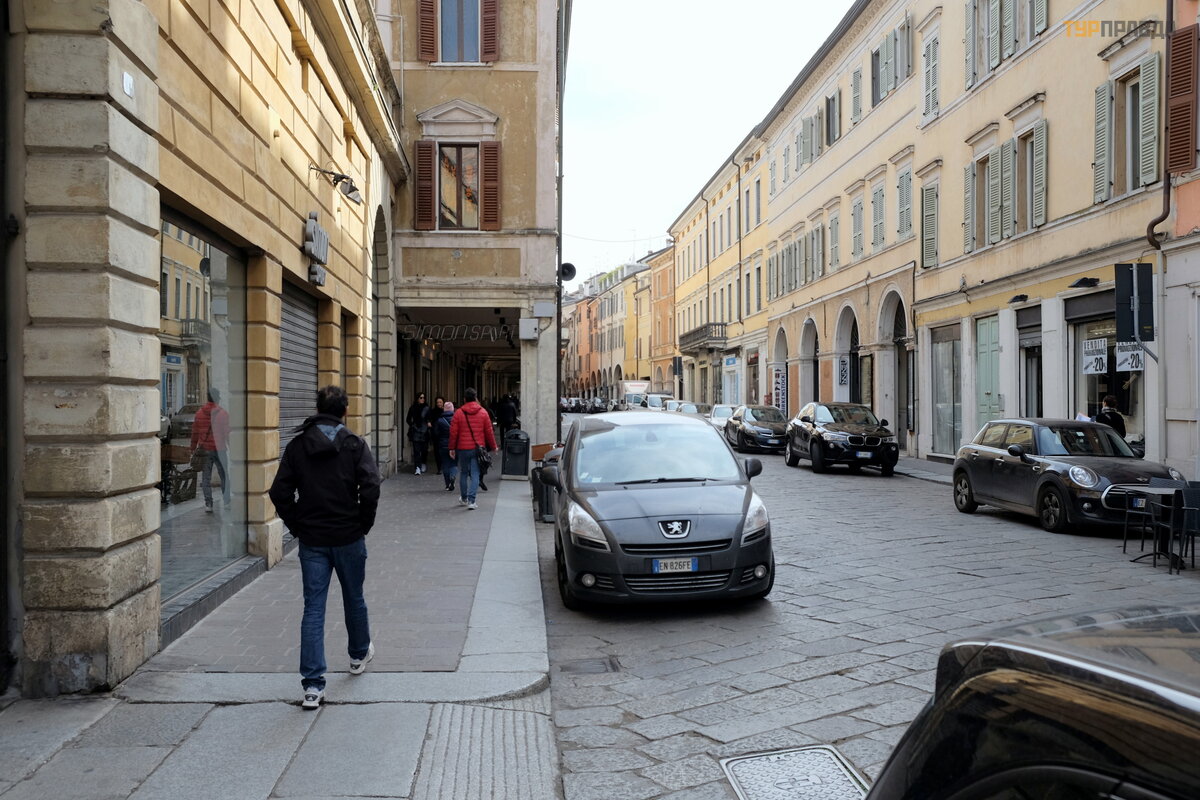
Подходим к зданию общественного театра в неоклассическом стиле, построено в 1818-1822 годах:
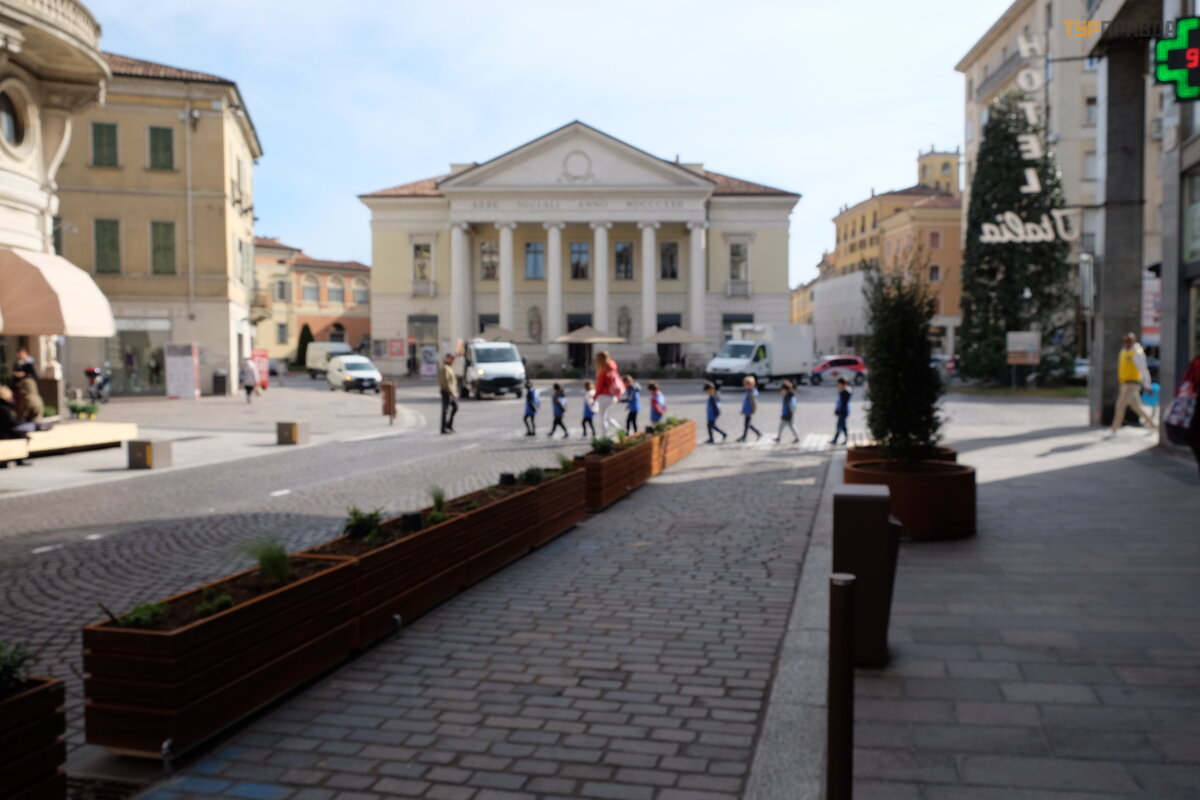
По дороге встретили смешных малышей:
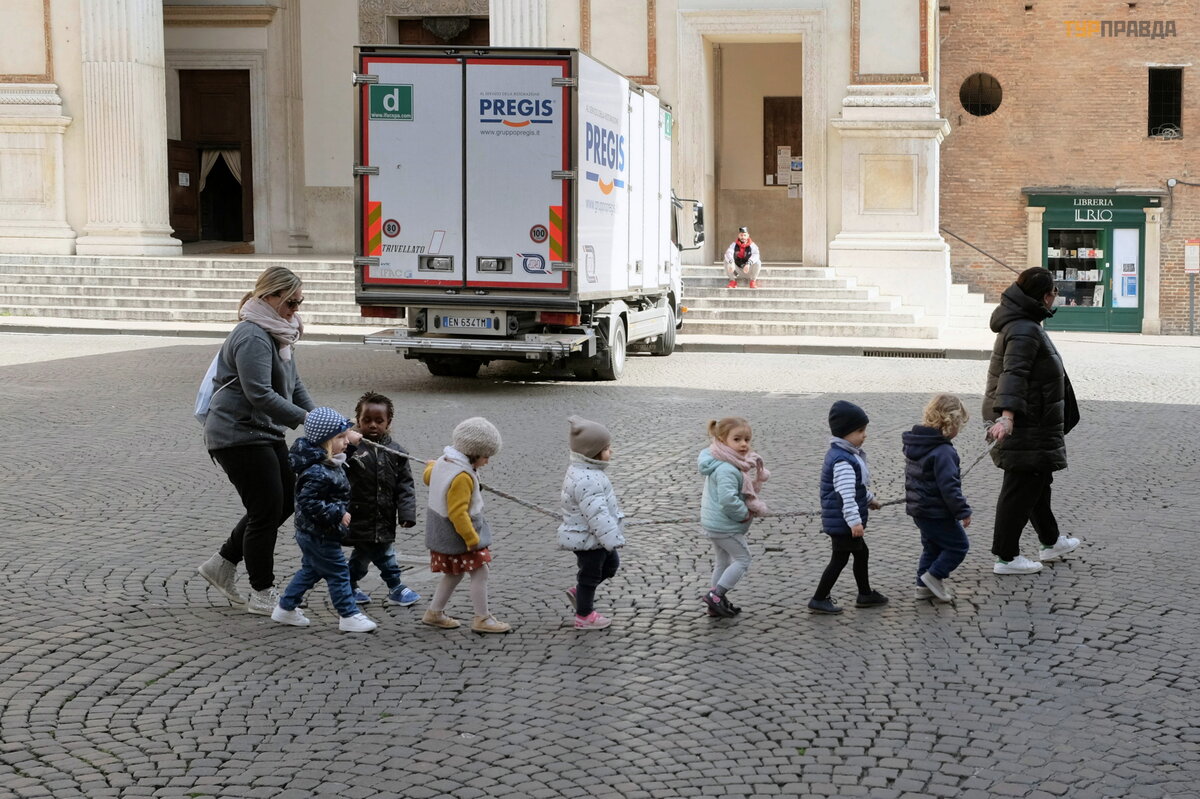
Базилика Сант-Андреа, расположенная на площади Пьяцца Мантенья, построенная по проекту Леон Баттиста Альберти между 1472 и 1494 гг. :
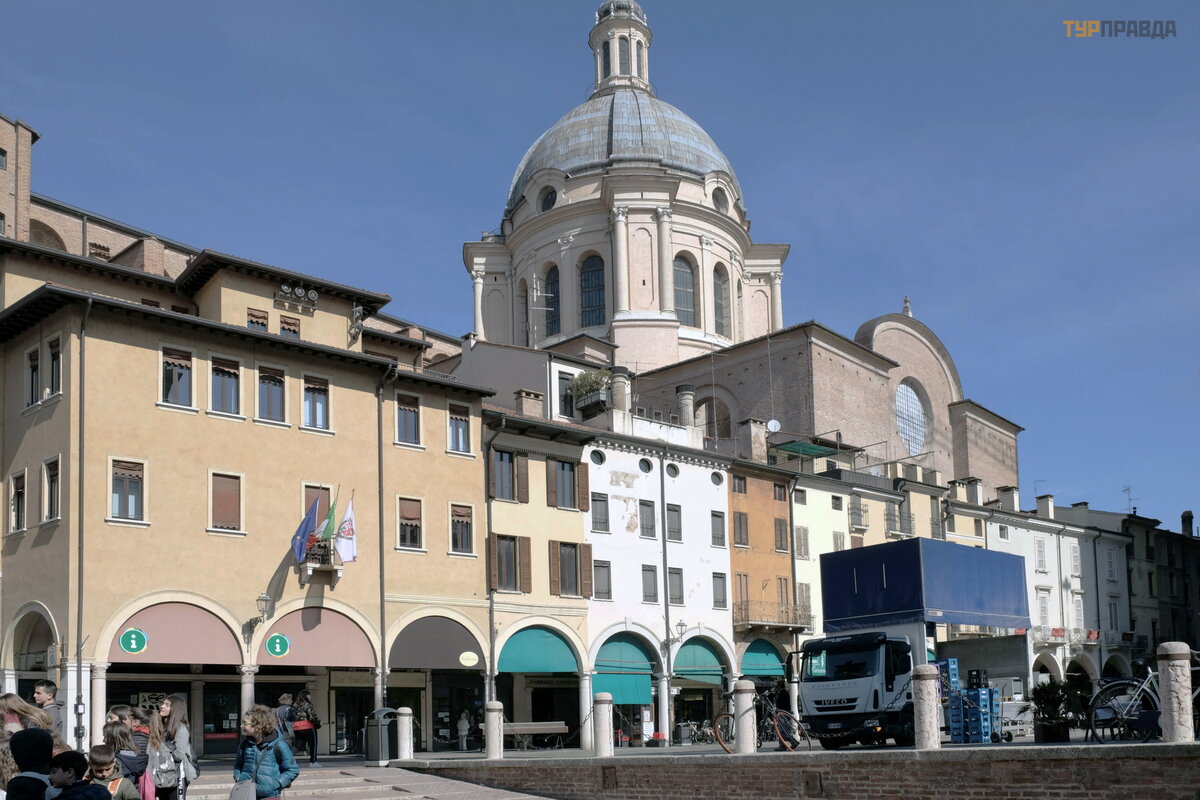
Здесь хранятся священные вазы с кровью Христа – её привёз в родной город римский центурион Лонгин, по преданию, пронзивший копьём бок распятого Христа. Ради хранения двух ампул с кровью Христовой и воздвигнута базилика Сант-Андреа. Здесь же похоронен Андреа Мантеньи – величайший живописец эпохи Возрождения.
После смерти Альберти храм достраивали несколько архитекторов, в т. ч. знаменитый Юварра. Храм получился величественным, но несколько дисгармоничным – из-за несогласованности его различных частей и из-за изменений, которые внесли разные архитекторы на протяжении строительства, а также отступления от первоначального проекта Альберти.
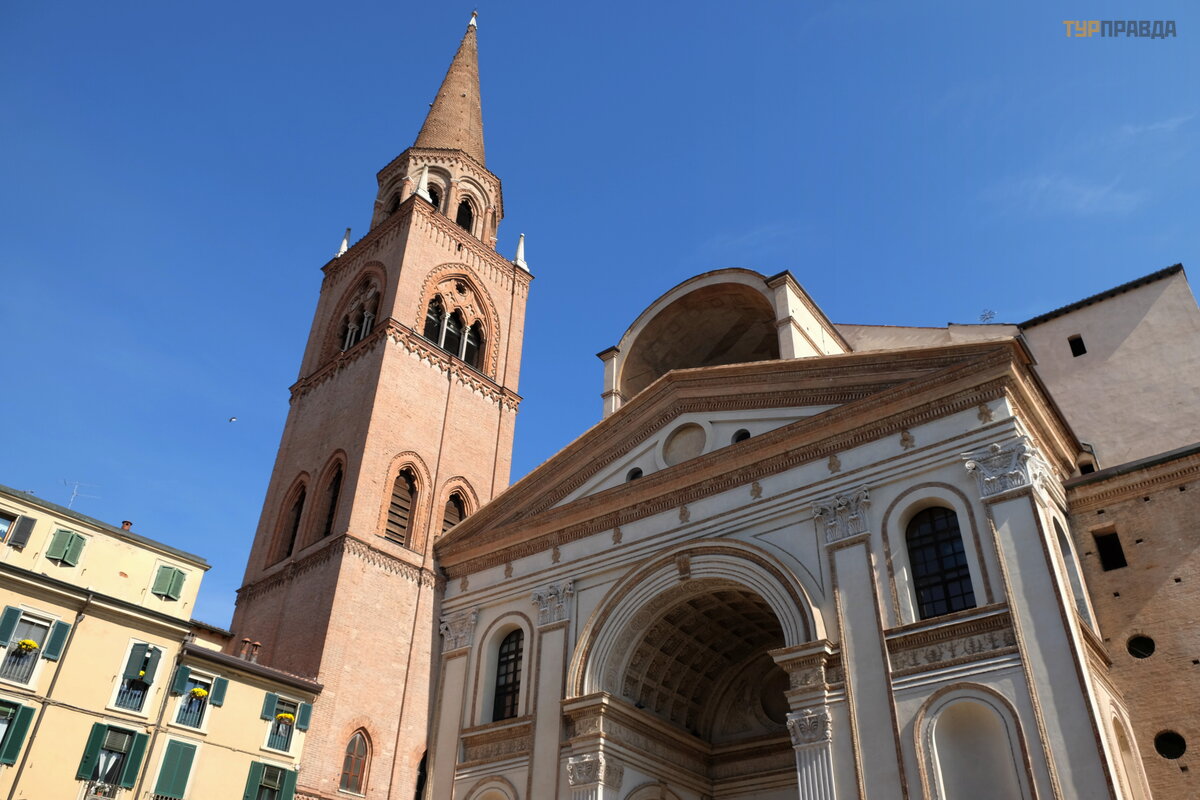
Более целостное и художественно выразительное впечатление производит интерьер базилики, который считают шедевром Альберти:
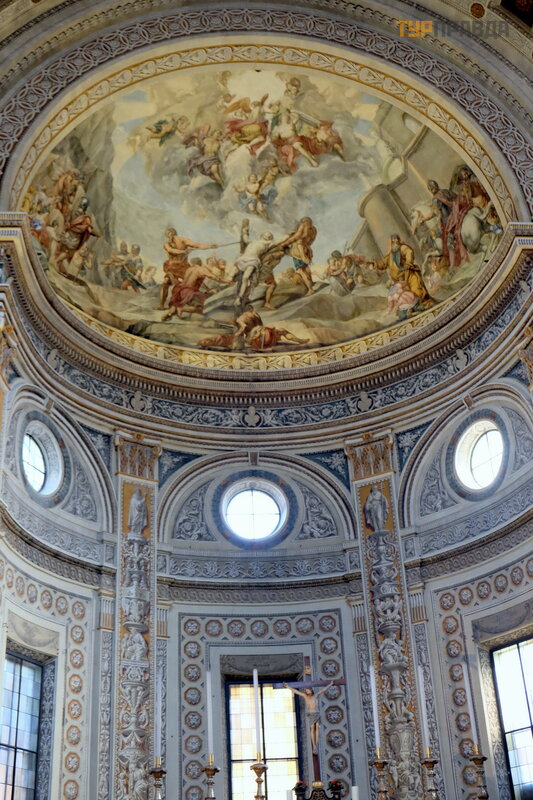
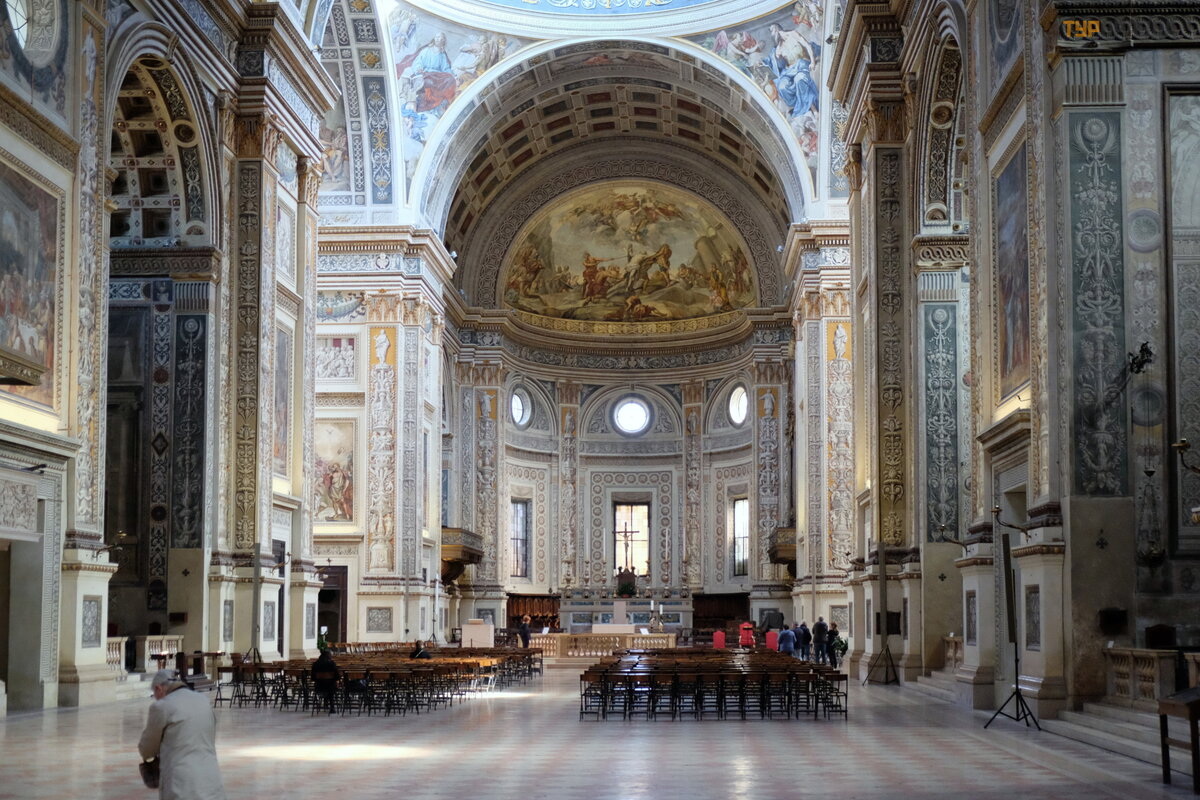
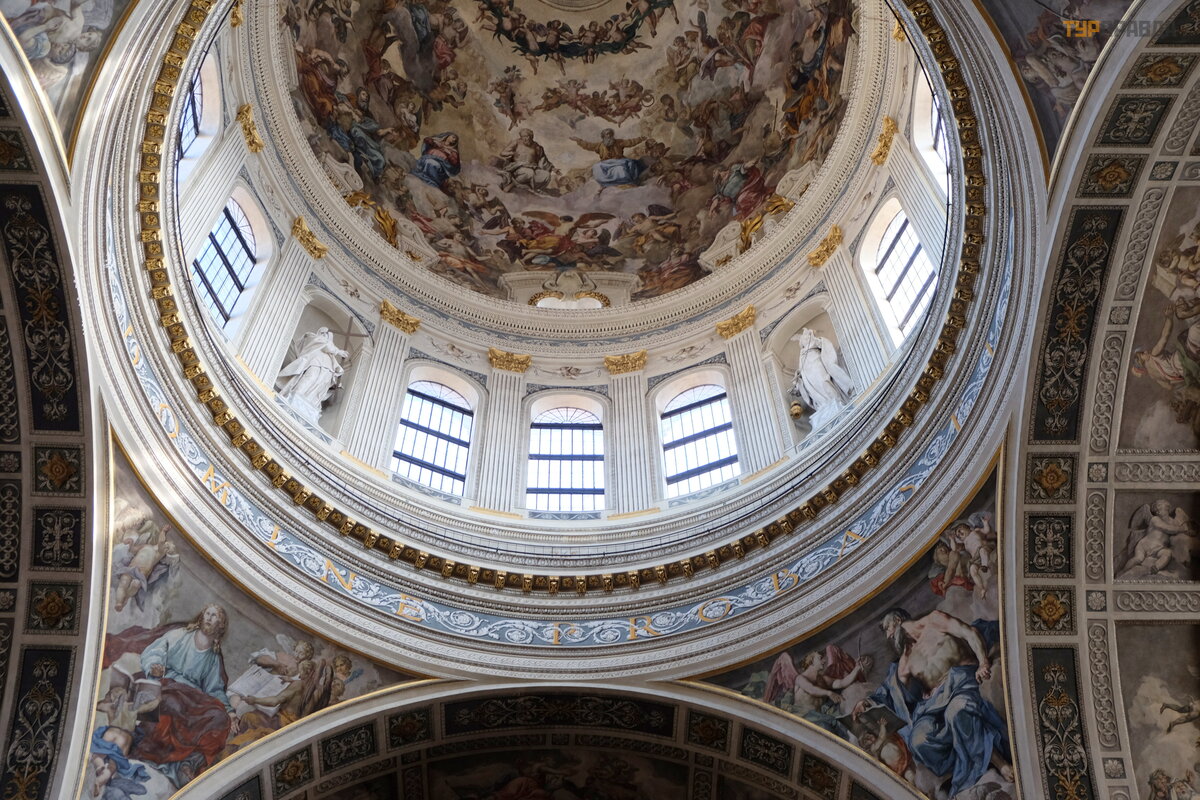
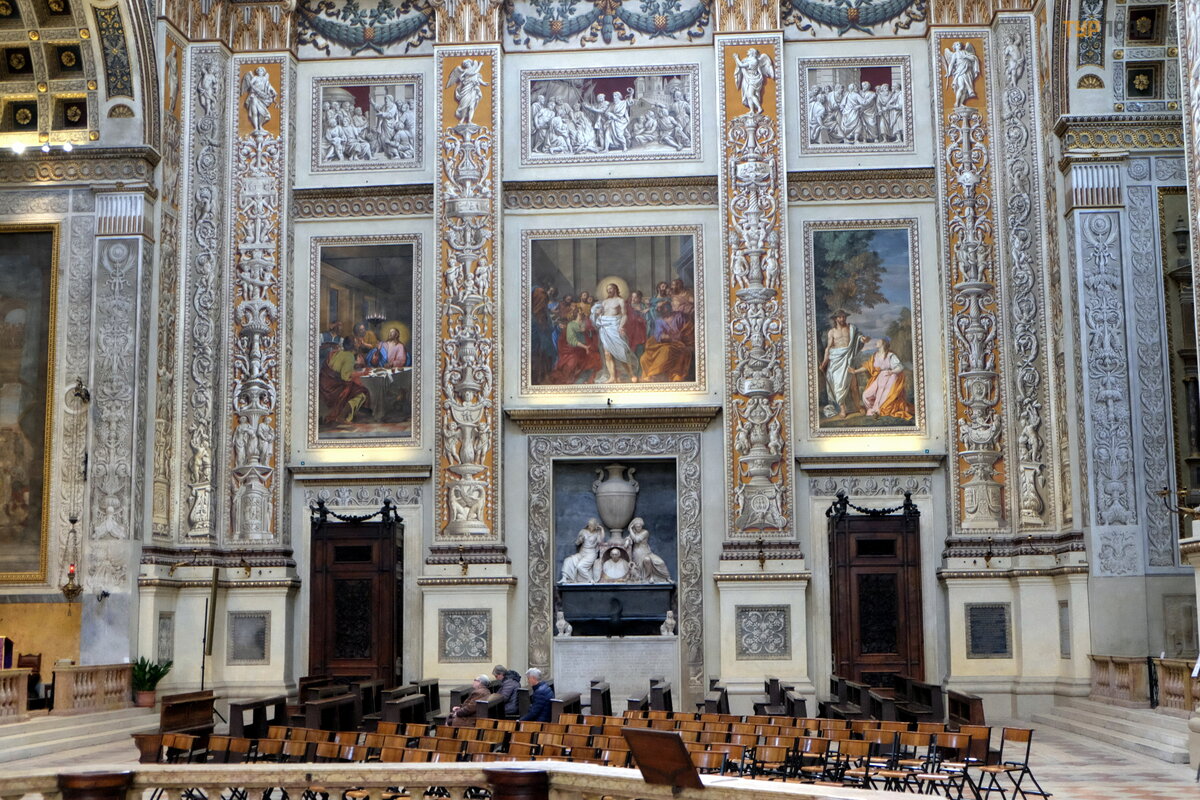
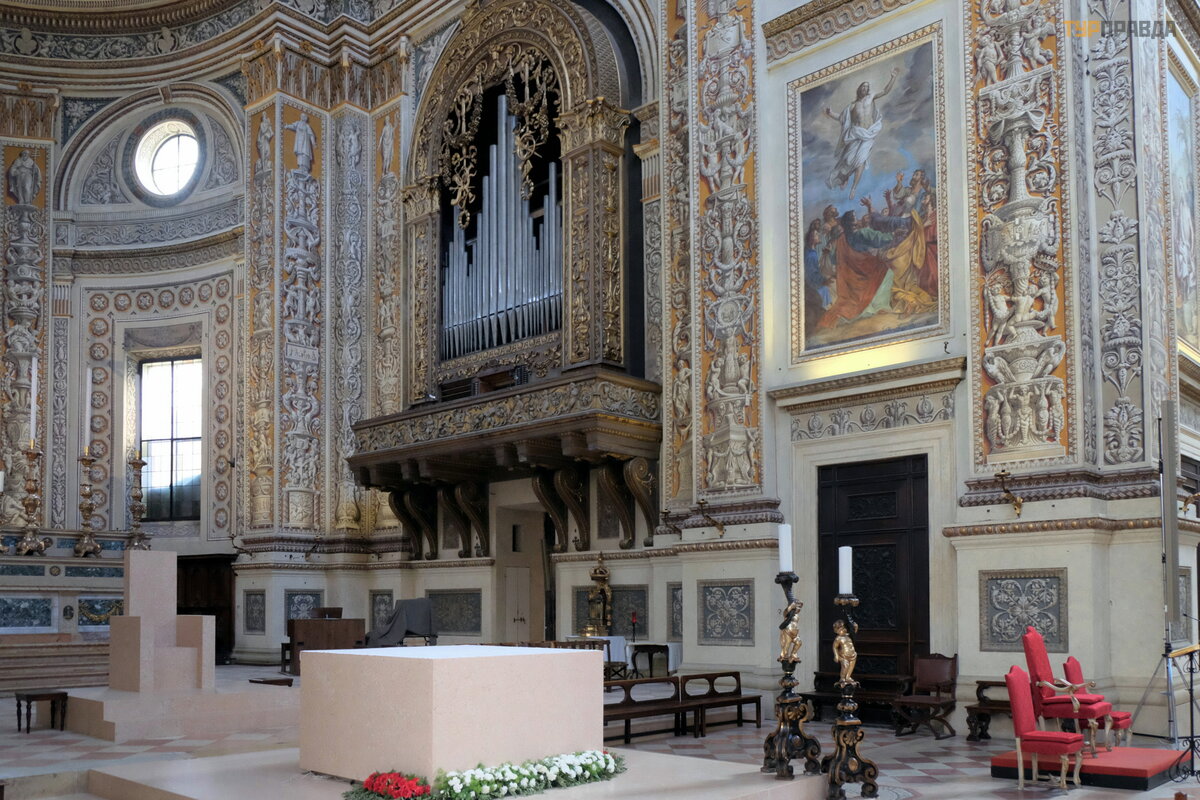
Рядом на пьяцца Эрбе (Площадь Трав) расположена Ротонда Святого Лоренцо (Rotonda di San Lorenzo), которая отличается заметным сходством с Храмом Гроба Господня в Иерасулиме Это древнейшая из сохранившихся церквей в Мантуе, она была построена в 1082 году.
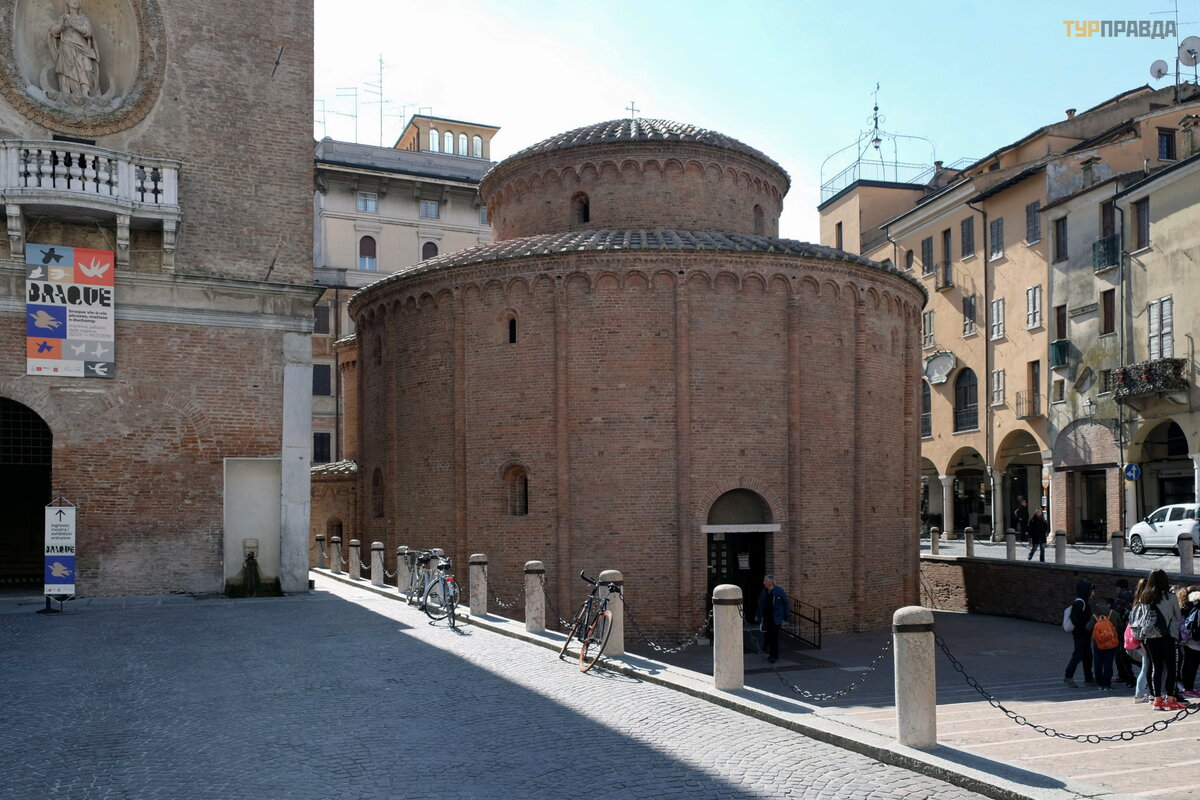
К ротонде примыкает Палаццо делла Раджоне с башней и астрологическими часами. Часовая башня построена в 1473 году по проекту Луки Фанчелли, а в 1493 году на ней были установлены изумительные часы Бартоломео Манфреди – механика, математика и астролога при дворе Гонзага. Часы претерпели несколько этапов реставрационных работ и до сих пор действуют. Они не только показывают время, но и месяц, фазы луны, а также указывают на положение планет и зодиакальных созвездий.
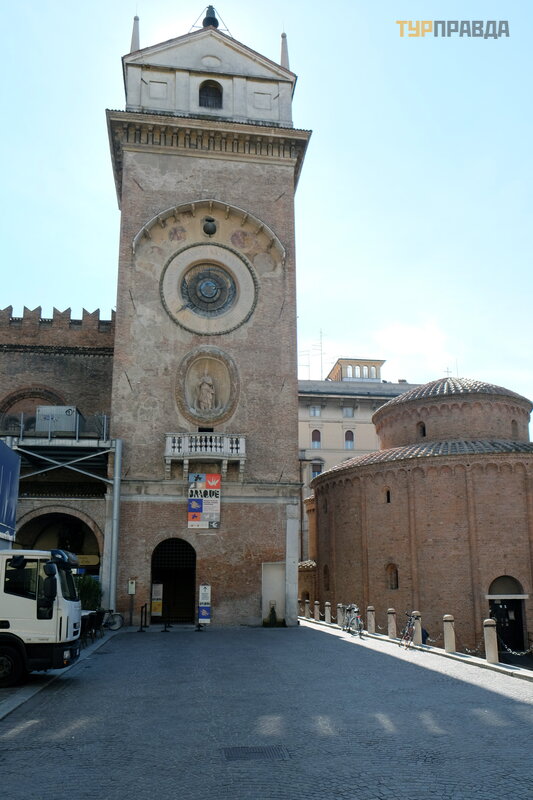
Если церковь Сант-Андреа считается самым красивым собором Мантуи, то главным Кафедральным собором является Собор Сан-Пьетро. Он построен в 12 веке и представляет собой сооружение в романском стиле. Позднее – в 1395-1401 гг. – фасаду добавили элементы в готическом стиле. В 15 веке после сильного пожара здание подверглось реконструкции и стало похоже на базилику св. Петра в Ватикане. А в 18 веке первоначальный вид фасада из разноцветного мрамора был заменен на беломраморный. Собор расположен на площади Piazza Sordello, недалеко от Палаццо Дукале.
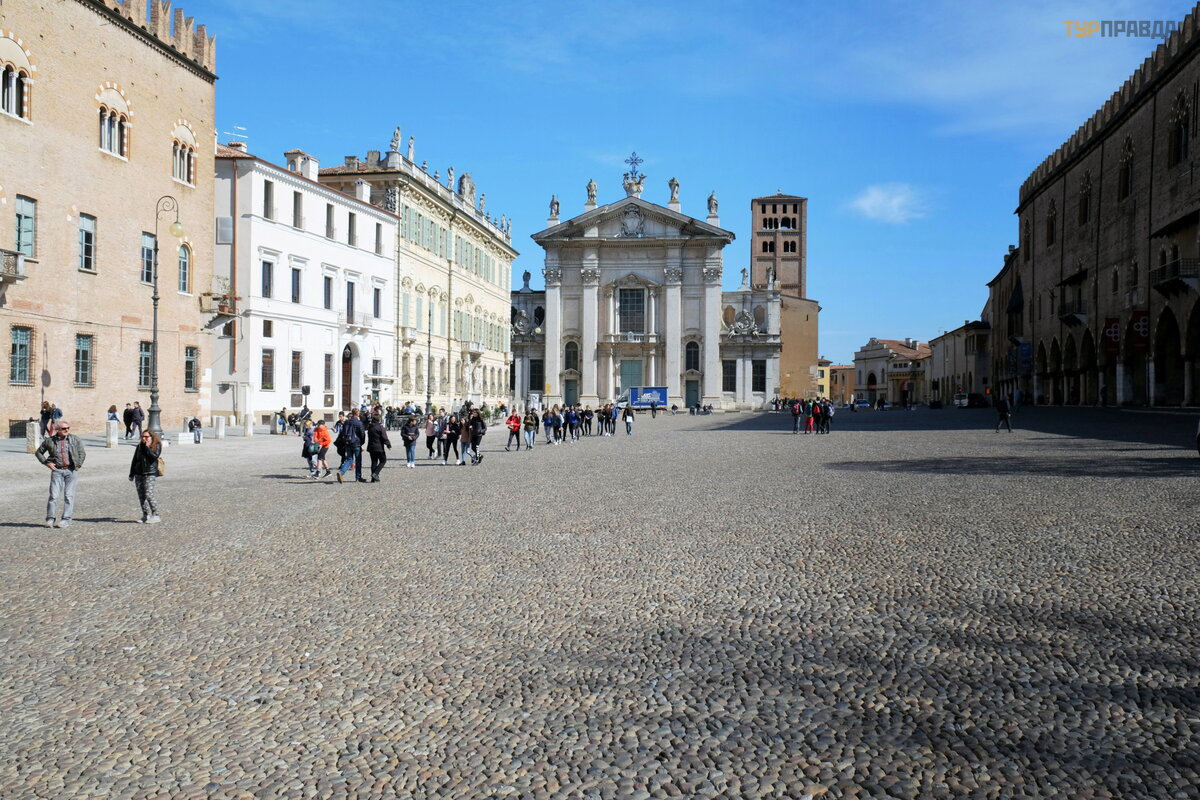
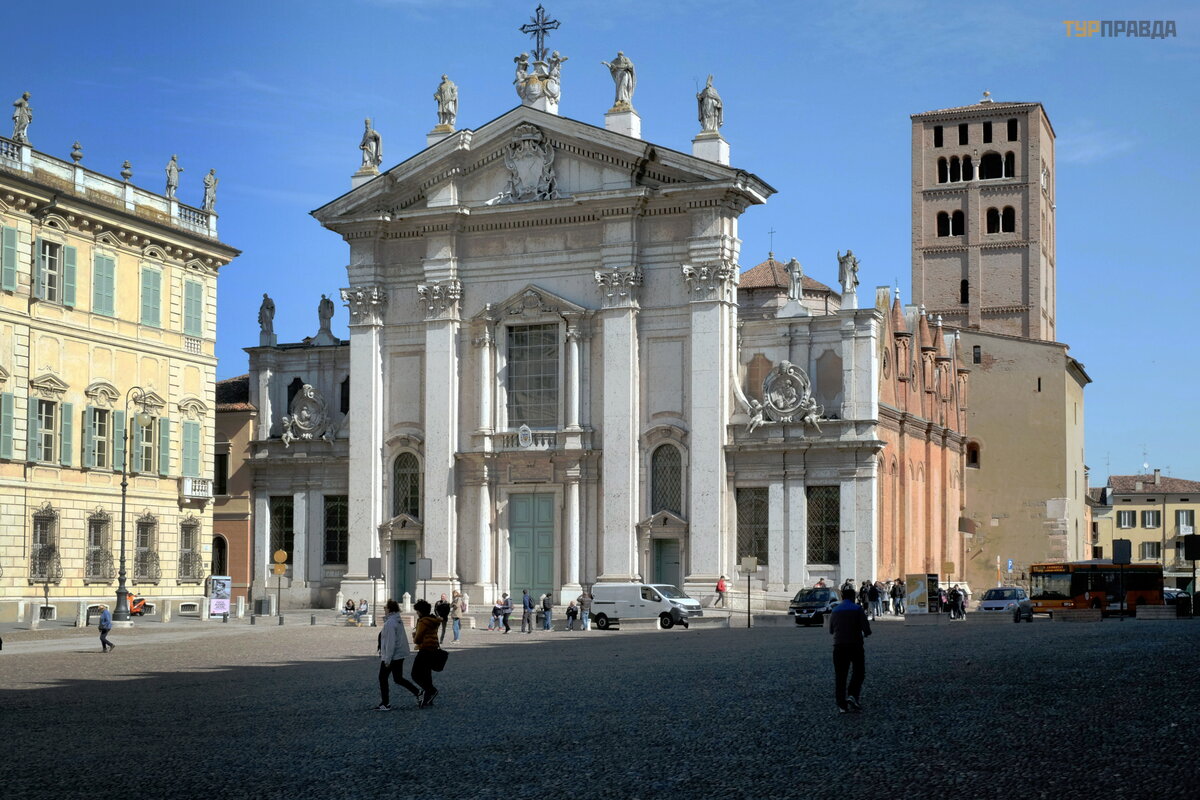
Вид с другого ракурса:
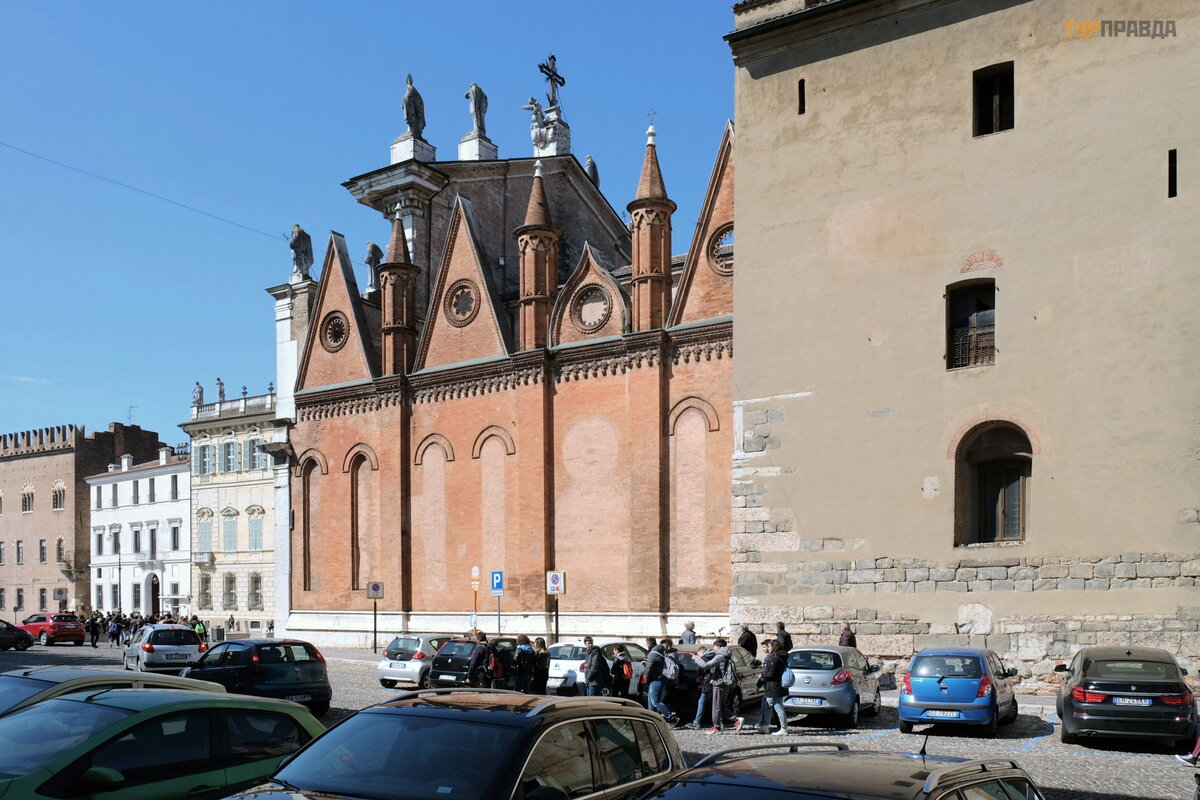
Из сохранившихся произведений искусства стоит отметить саркофаг в стиле раннего христианства, фрески 14-15 века, капеллу Богоматери и ризницу. Внутри собора алтари украшены произведениями знаменитых художников Мантуи.
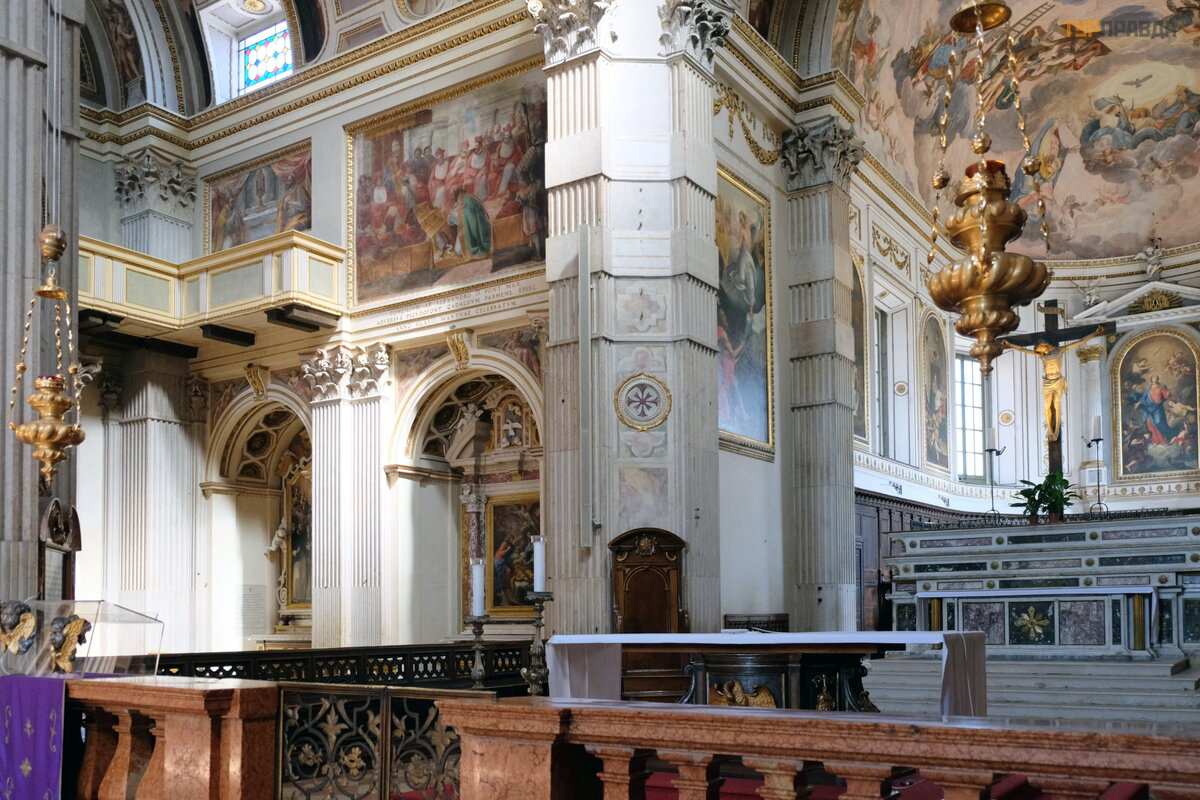
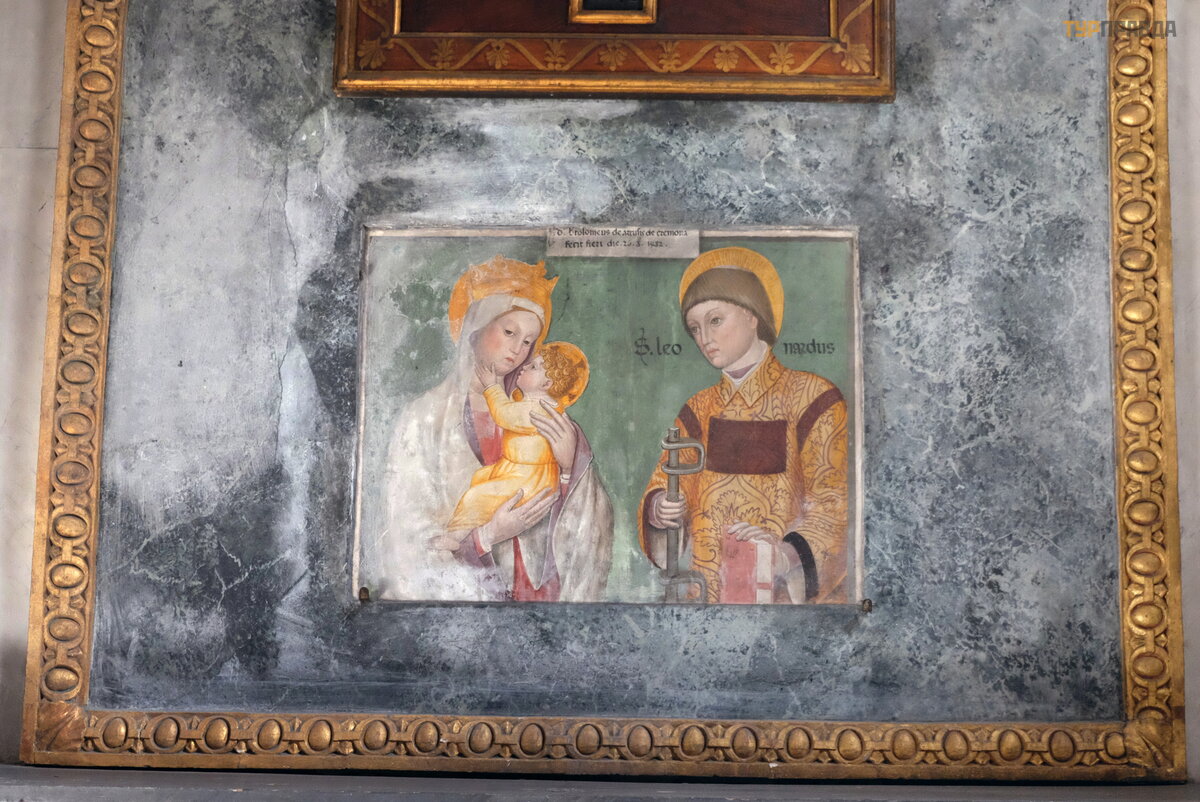
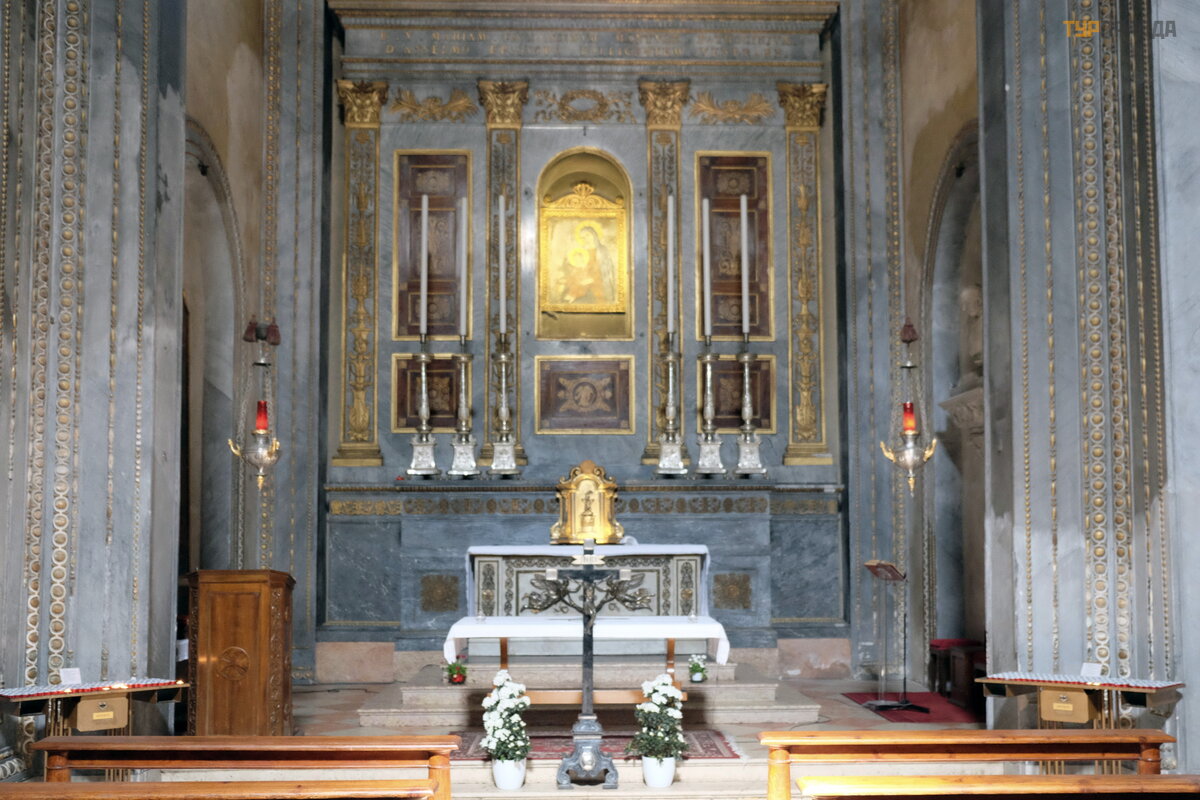
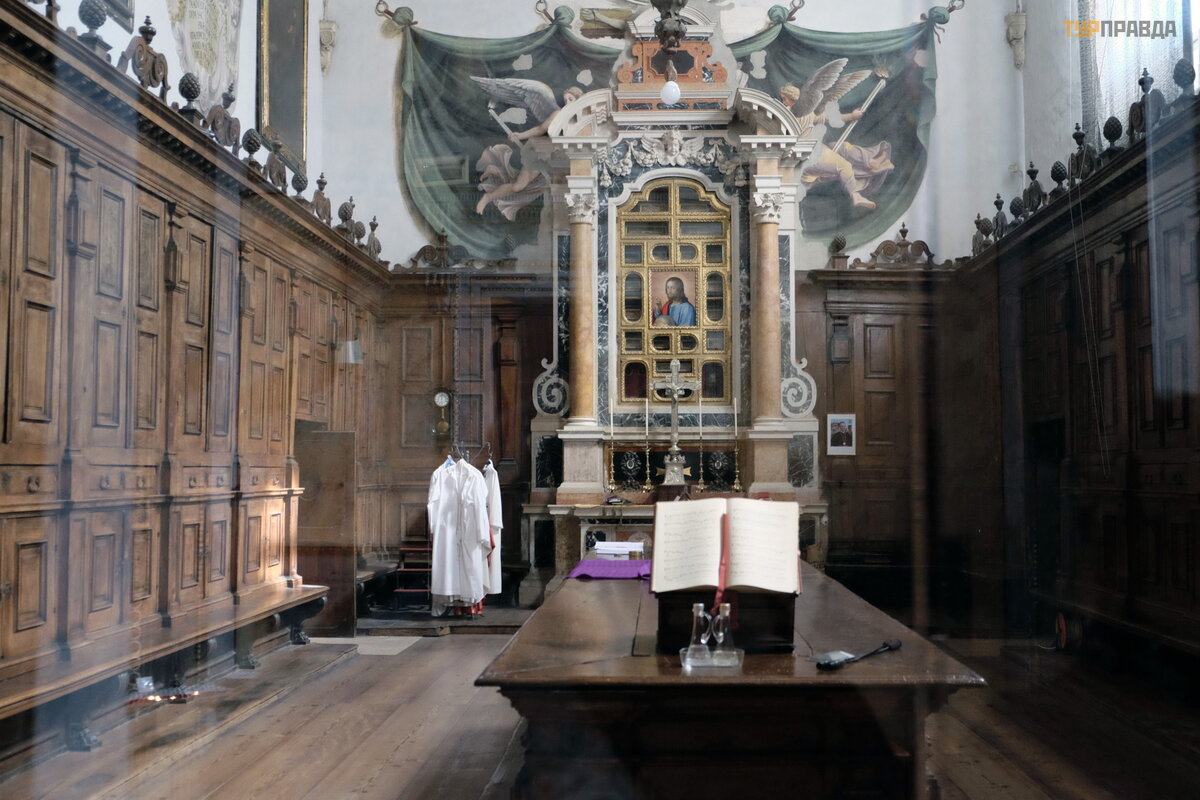
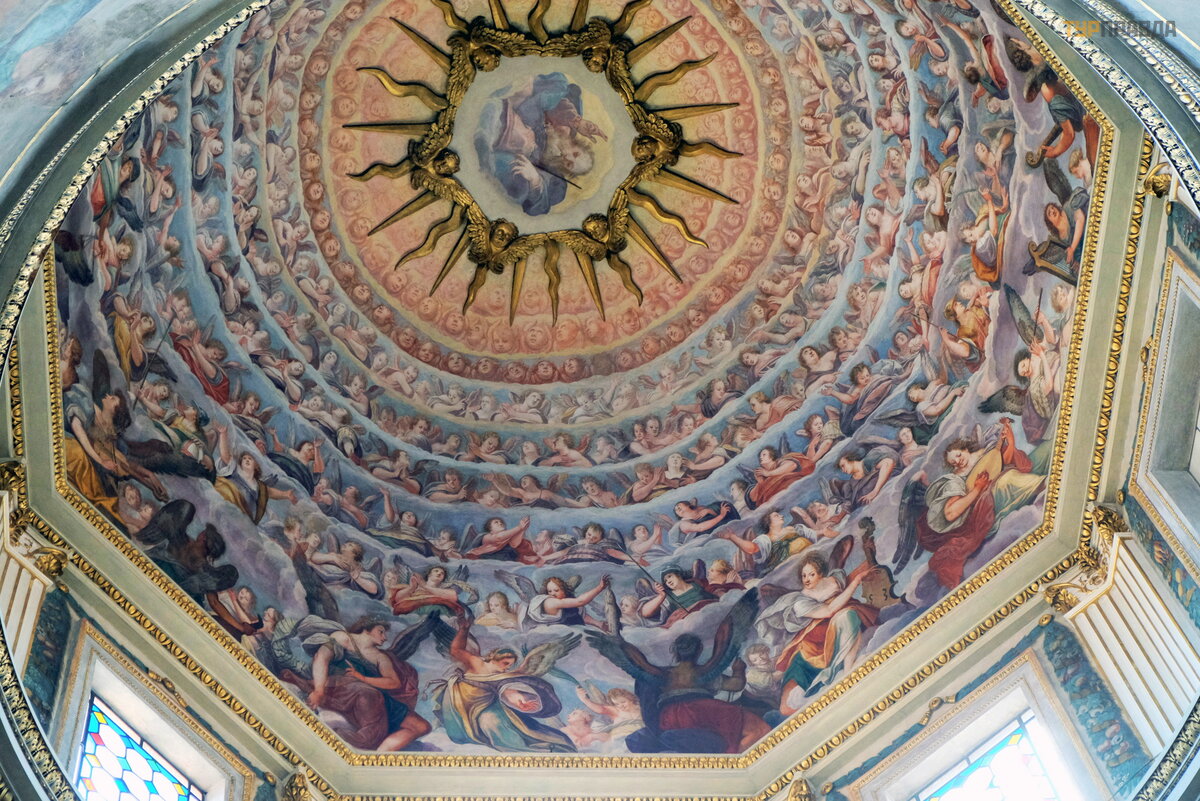
Неподалеку от собора находится туристическая замануха – " Дом Риголетто" .
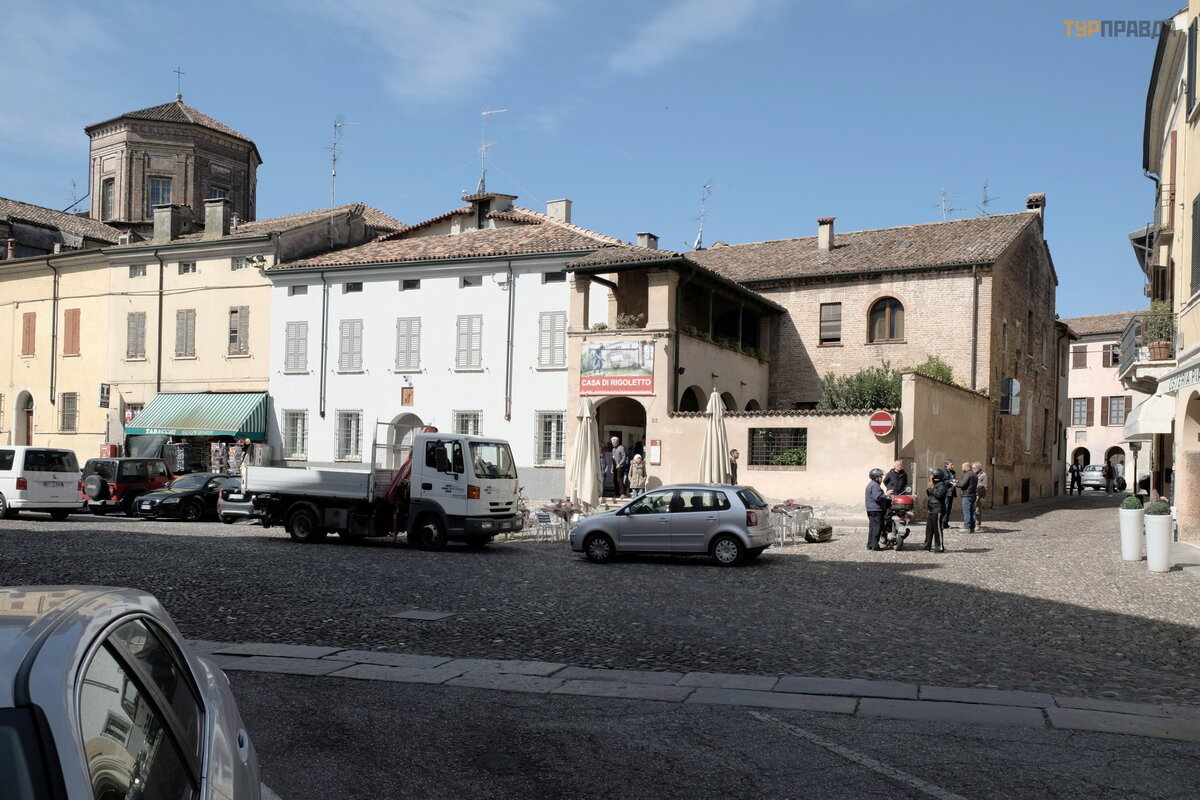
Перед домом сам гоерой оперы Верди:
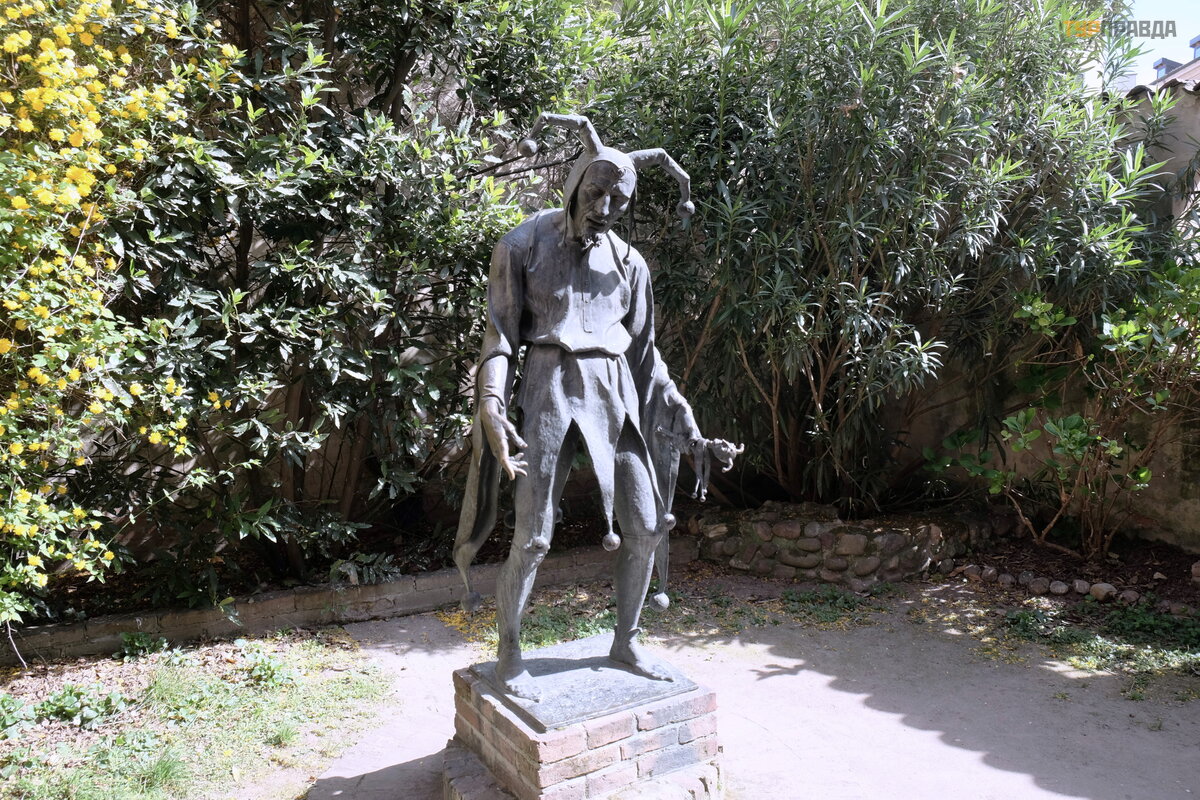
На Пьяцца Сарделло много красивых исторических зданий. Вот, палаццо Бонакольси (Bonacolsi) или Кастильони (Castiglioni), построен в 1281 году. Изначально оно принадлежало графам Бонакольси – это были первые сеньоры города Мантуи, продержавшиеся в этом качестве недолго. Именно с их изгнания и началось в Мантуе владычество Гонзага. Около 1700 года здание перешло к семье Кастильоне.
Левее его находится настоящее средневековое здание, да еще и с башней (в лесах). Это палаццо Подеста. Башня « Торре делла Габбья» (на итал. Torre della Gabbia) – это средневековая башня, расположенная на улице Via Cavour. Башня была построена в 1281 году семьей Асерби, хотя некоторые источники утверждают, что башня была построена в 1302 году архитектором Бонакольси.
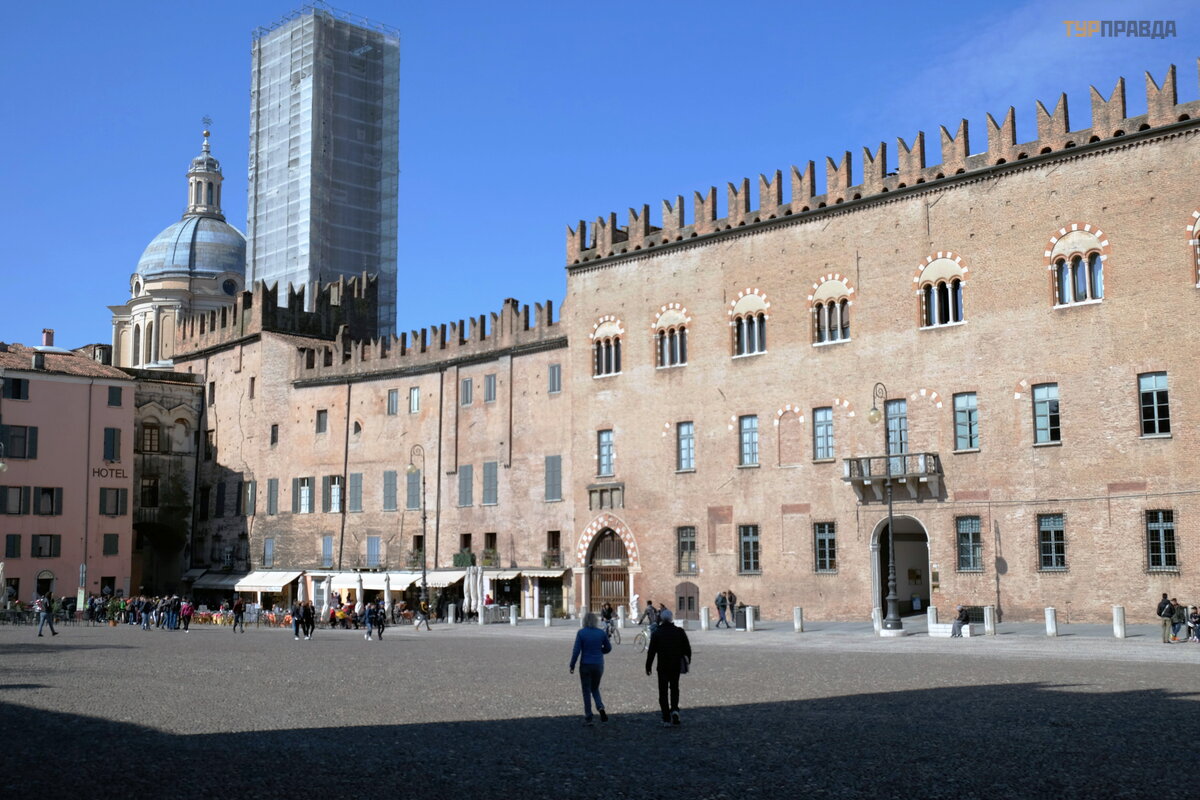
На противоположной стороне площади Палаццо Дукале, основанный в XIII веке. Это целый комплекс зданий разных эпох. Весь комплекс включает около 500 комнат, общая площадь 34 тыс. кв. м. Самое старое здание – именно то, фасад которого выходит на Пьяцца Сорделло. Оно называется Палаццо дель Капитано и напоминает о той поре, когда первые Гонзага носили звание « Капитано дель Пополо» – « Капитан Народа» .
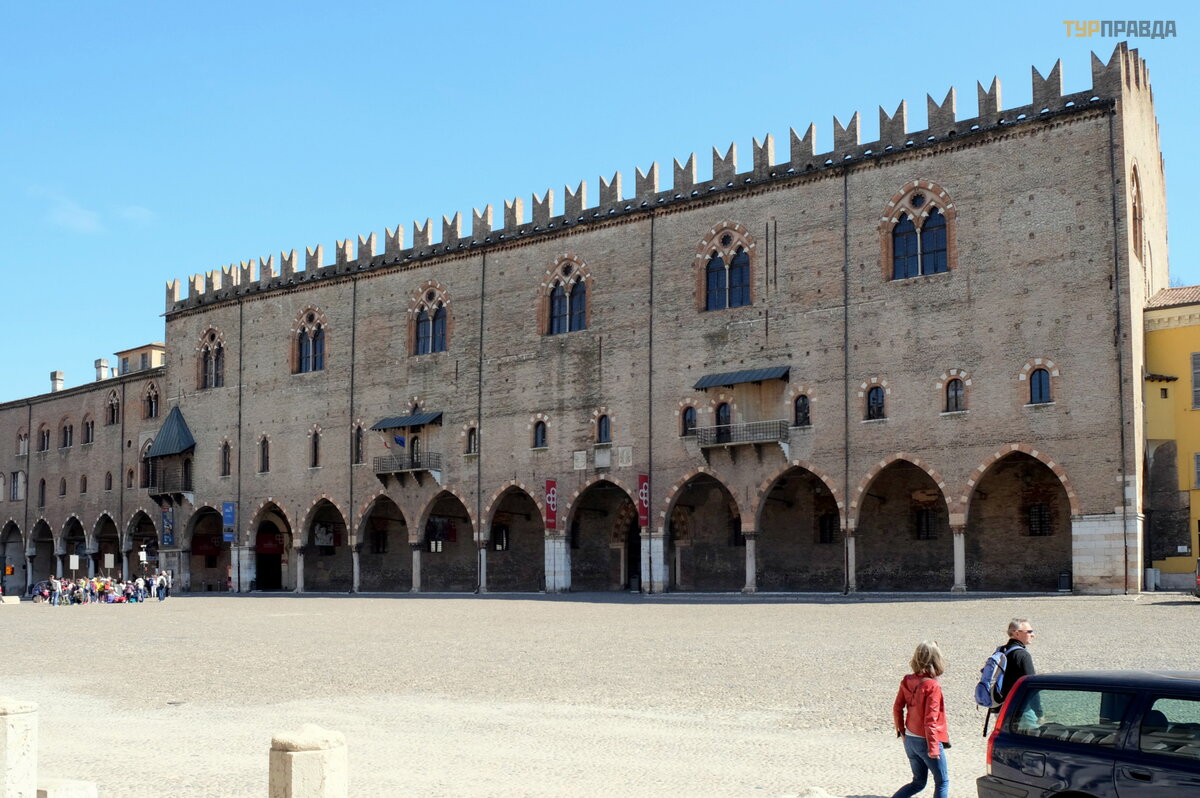
Замок Святого Георгия (на итал. Castello San Georgio) расположен на въезде в Мантую и является частью огромного комплекса Палаццо Дукале (на итал. Palazzo Ducale).
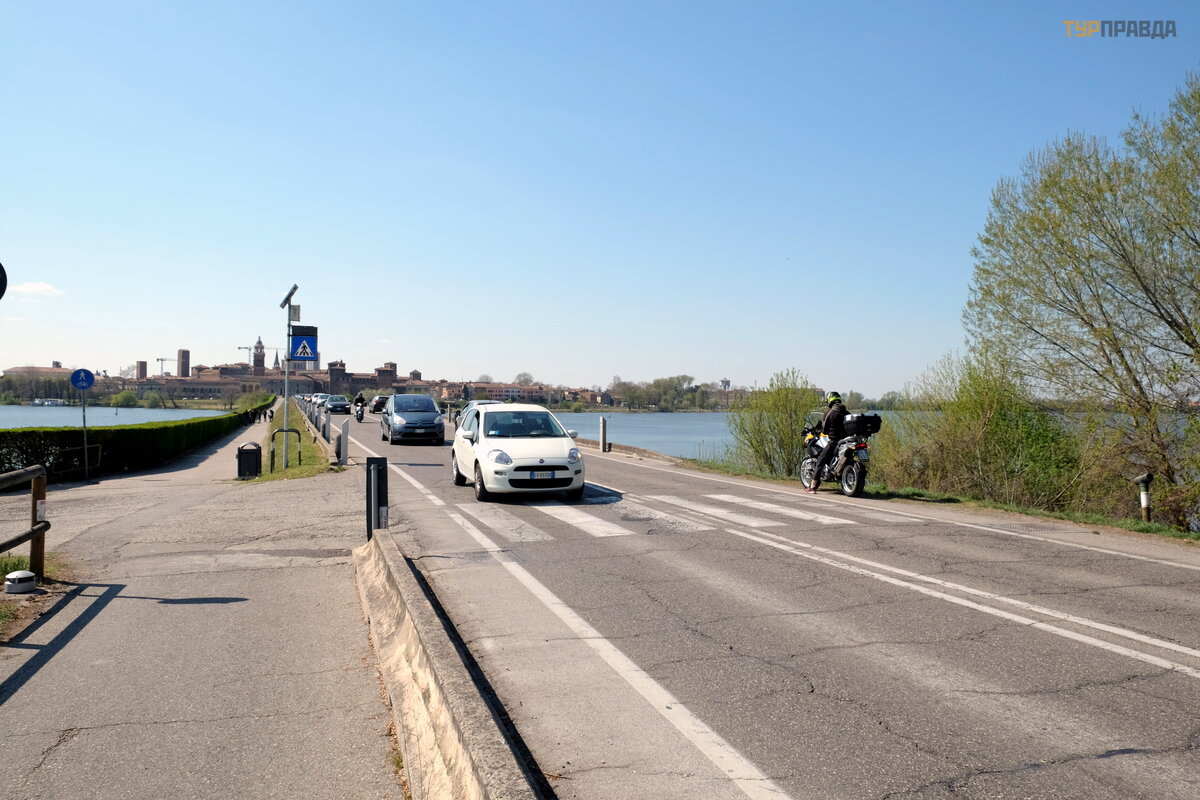
Это крупное сооружение из красного камня, которое имеет форму квадрата с тремя воротами и четырьмя сторожевыми башнями. Как и многие замки он окружен рвом, который наполнили водой из соседних озер, и выполнял оборонительную функцию, а впоследствии стал резиденцией семейства Гонзага.
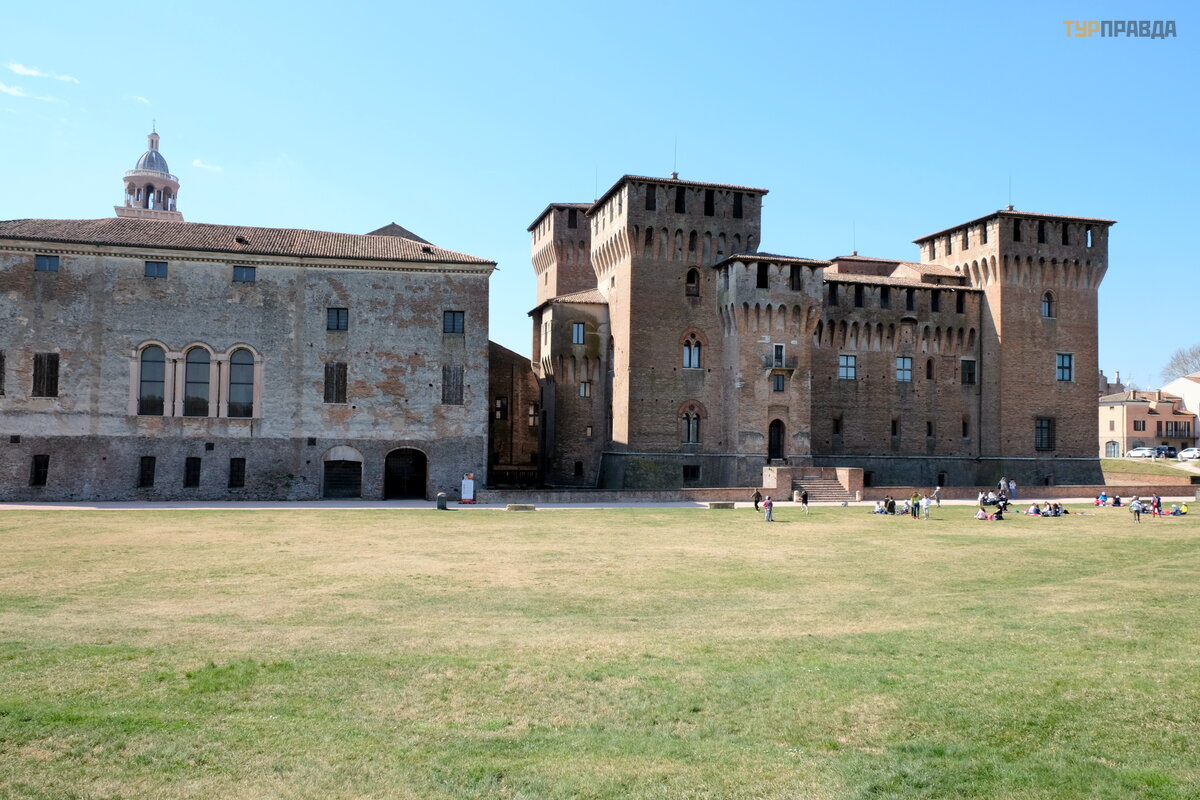
Здания, образующие Новый двор, начали строиться в 1480 году, а затем перестроены в 1587-1612 гг.
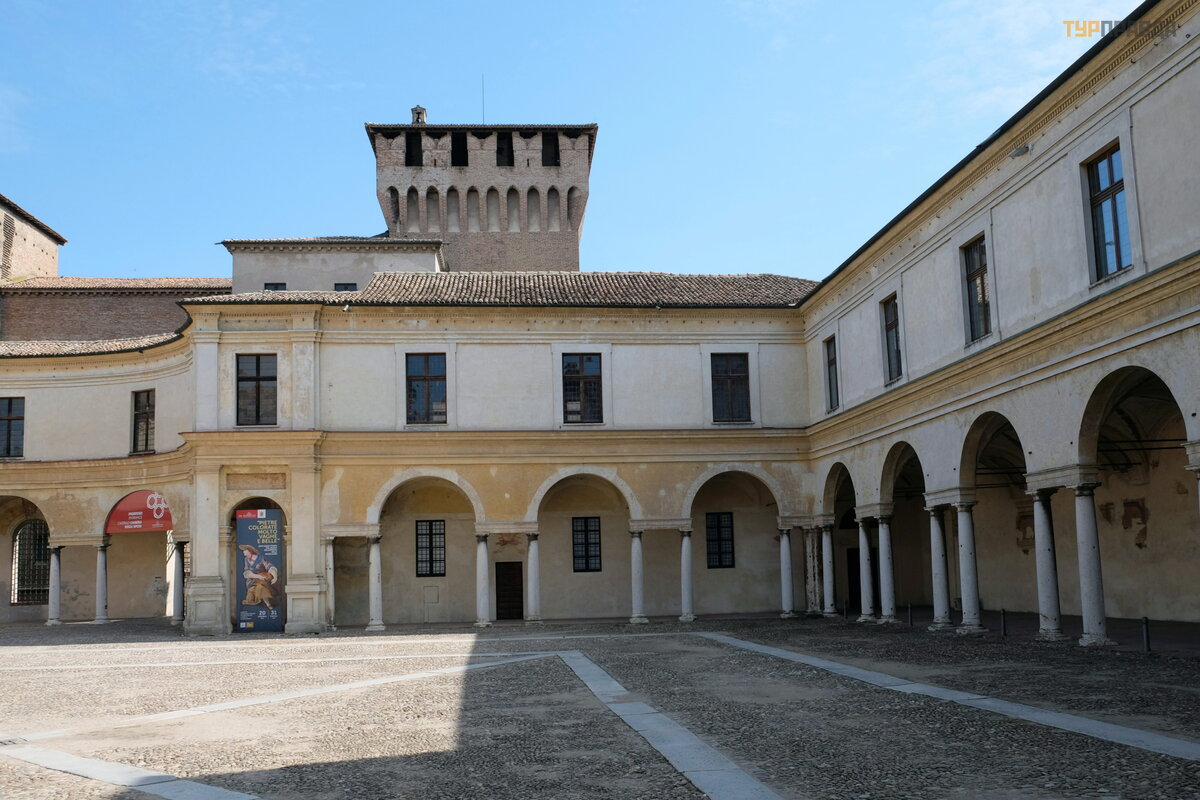
Дворцовая базилика Санта-Барбара, построенная в 1567-1572 гг. по проекту Джован Баттиста Бертани. Сейчас закрыта из-за повреждений, полученных при землятресении 2012 г.
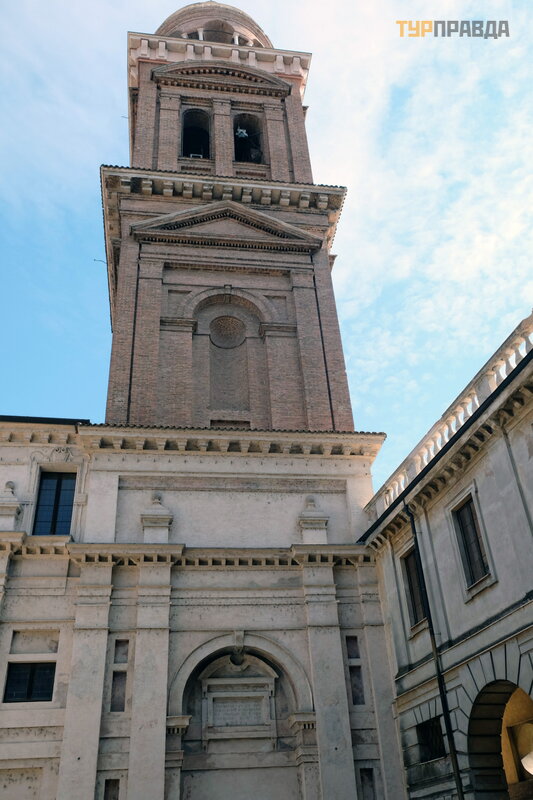
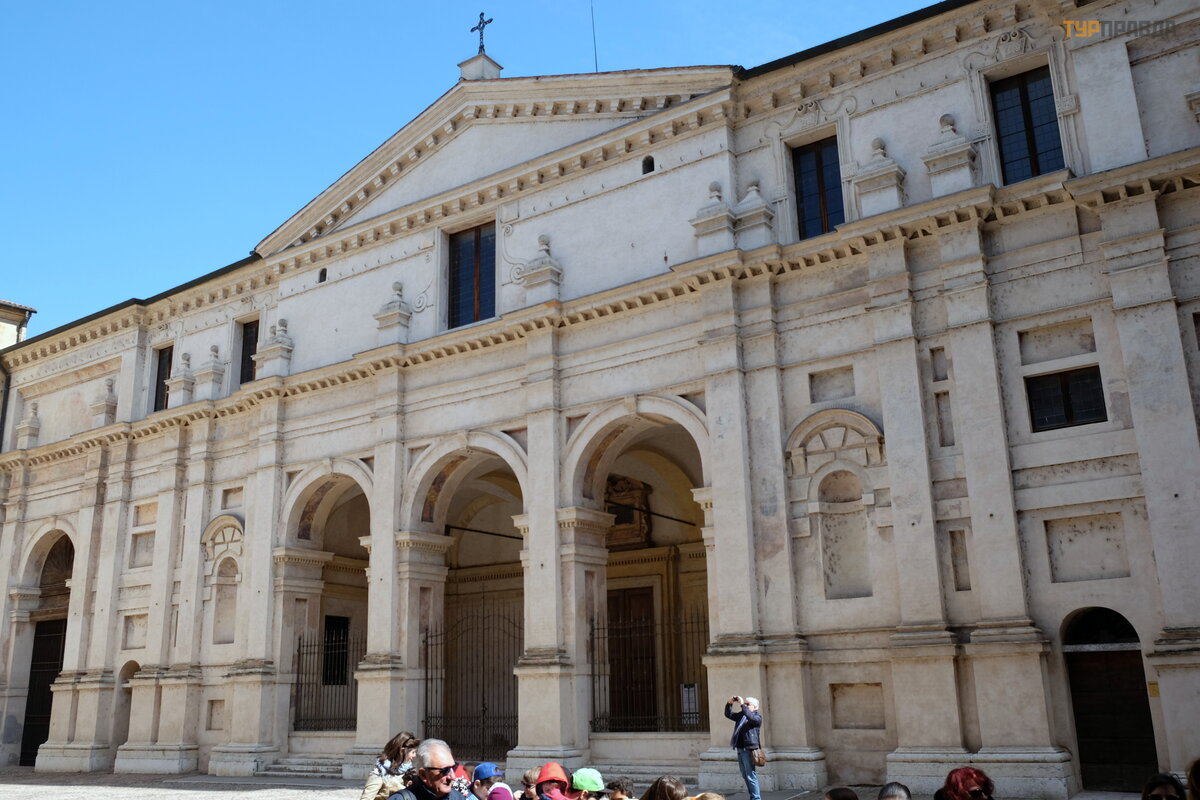
Самая знаменитая комната Палаццо Дукале – Камера дельи Спози (Комната новобрачных), расписанное фресками Андреа Мантеньив 1465-1474 гг. и знаменитое благодаря высокому качеству изображений, включающих около 30 портретных фигур, в основном семейства Гонзаго, а также умелому использованию перспективных обманок. Надо сказать, что в сезон осмотреть эту комнату затруднительно из-за большого скопления народу, да и время ограничивают, а тут повезло, никого кроме школьной экскурсии.
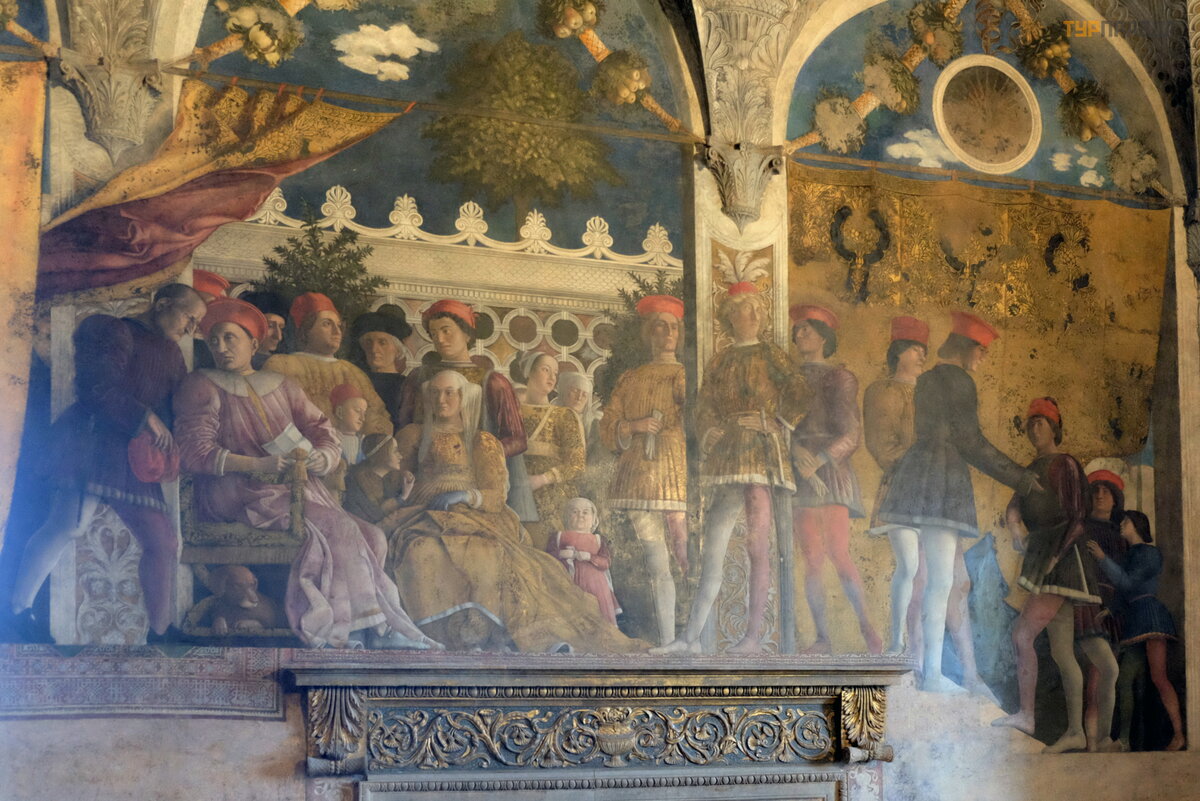

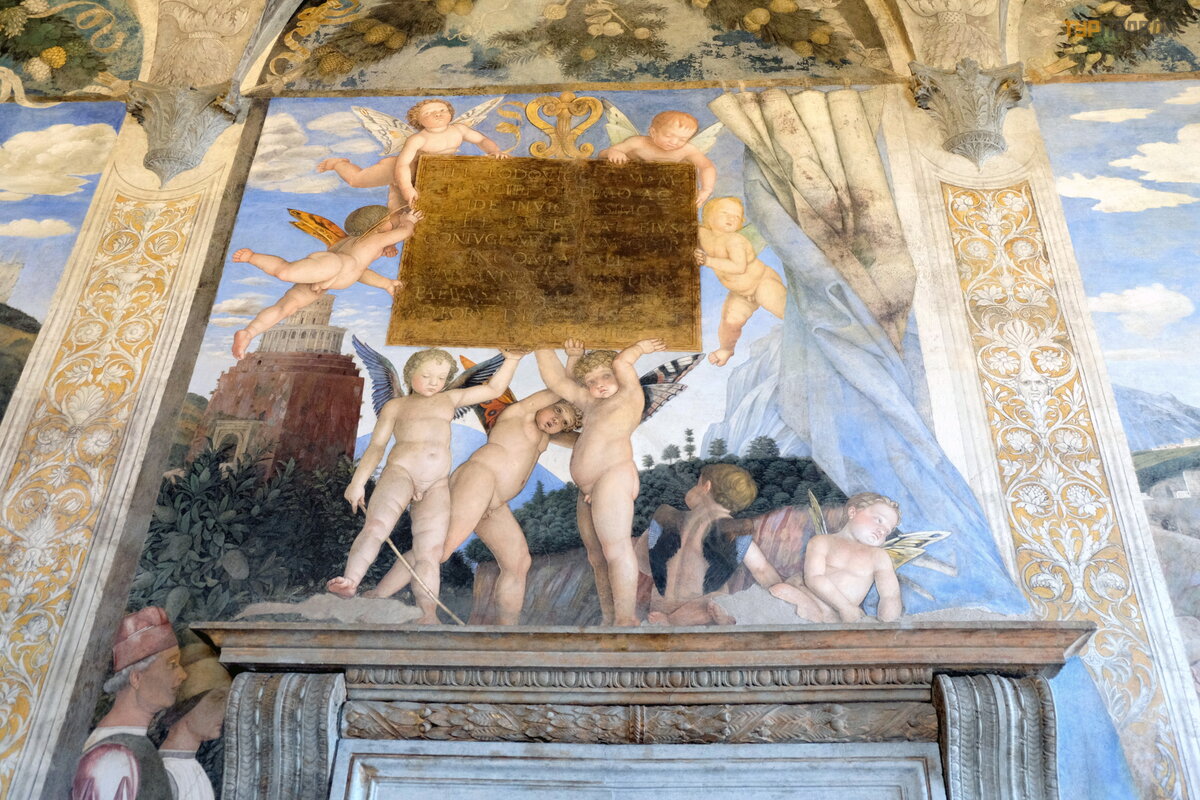
Самой известной фреской, привлекающее внимание туристов со всего мира, является " Окулос" (" Окно в небо" ). Потрясающее впечатление! Как будто люди из прошлого смотрят на тебя сквозь века.
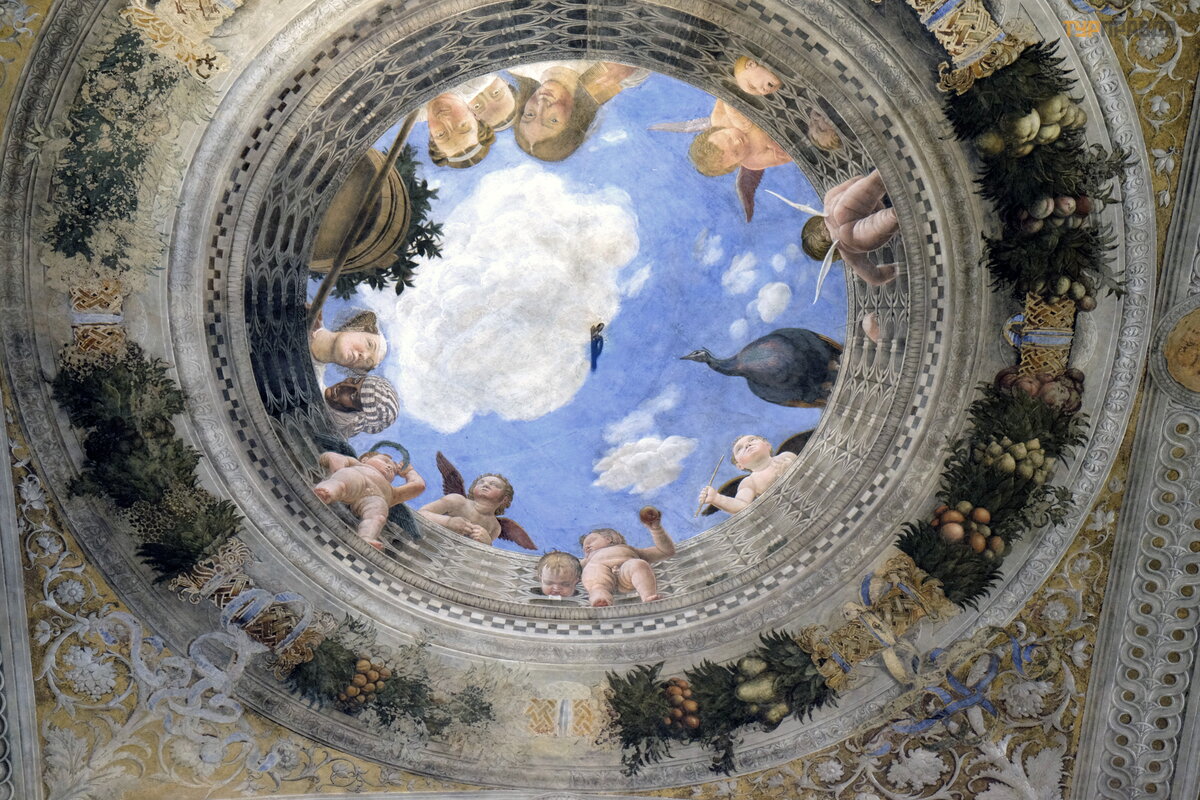
В свое время коллекция Гонзага была лучшей в Европе, город стал одним из самых известных культурных центров эпохи Возрождения, при дворе работали выдающиеся художники: Рубенс, Мантенья, Джулио Романо, архитектор Альберти. Расцвета меценатство достигло при страстной собирательнице искусства маркизе Изабелла д' Эсте, на нее работали Рафаэль, Тициан, Беллини.
Но еще в 1627-28 гг. обедневшие герцоги Гонзага начали распродавать коллекции древнего искусства. Часть ее они продали английскому королю, остальное было разворовано во время Sacco di Mantova (Разгрома Мантуи имперскими войсками 1630 г). Сегодня многие произведения искусства из коллекции рода Гонзага можно увидеть в разных музеях мира.
Впрочем, и сейчас музей интересен, уж фрески-то выкрасть и продать нельзя.
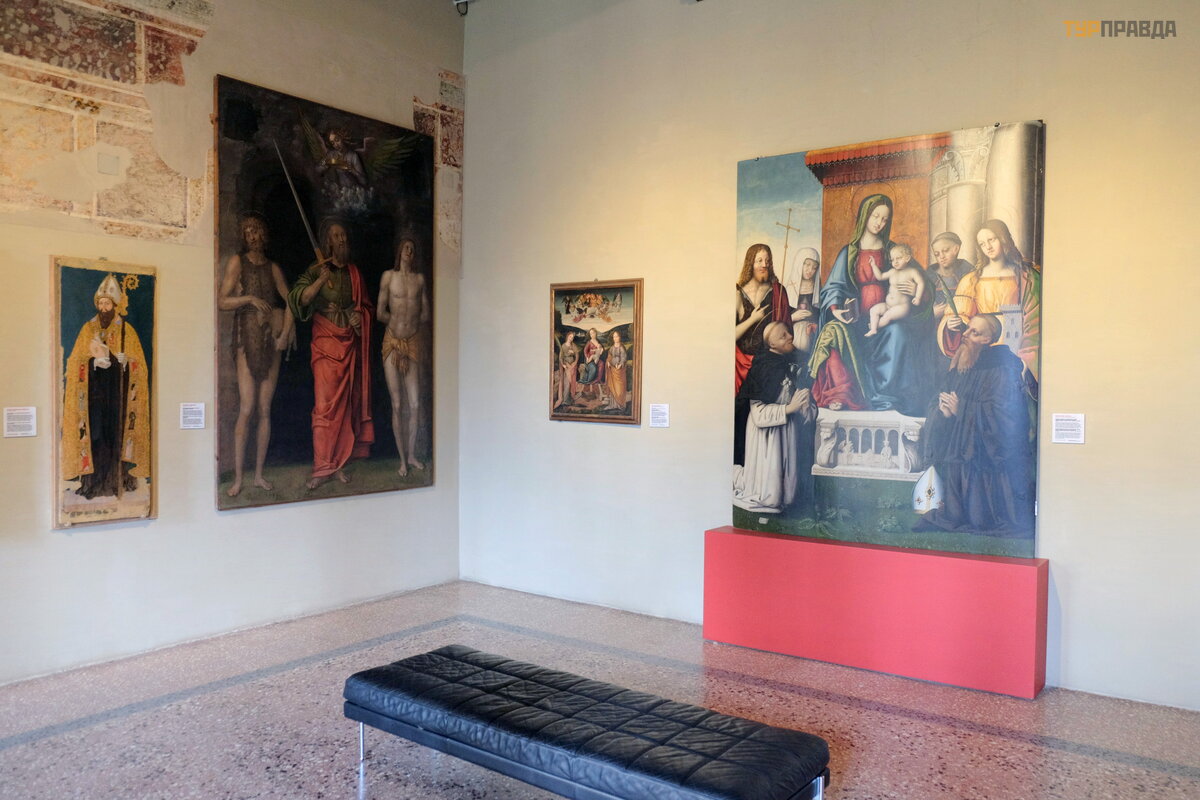
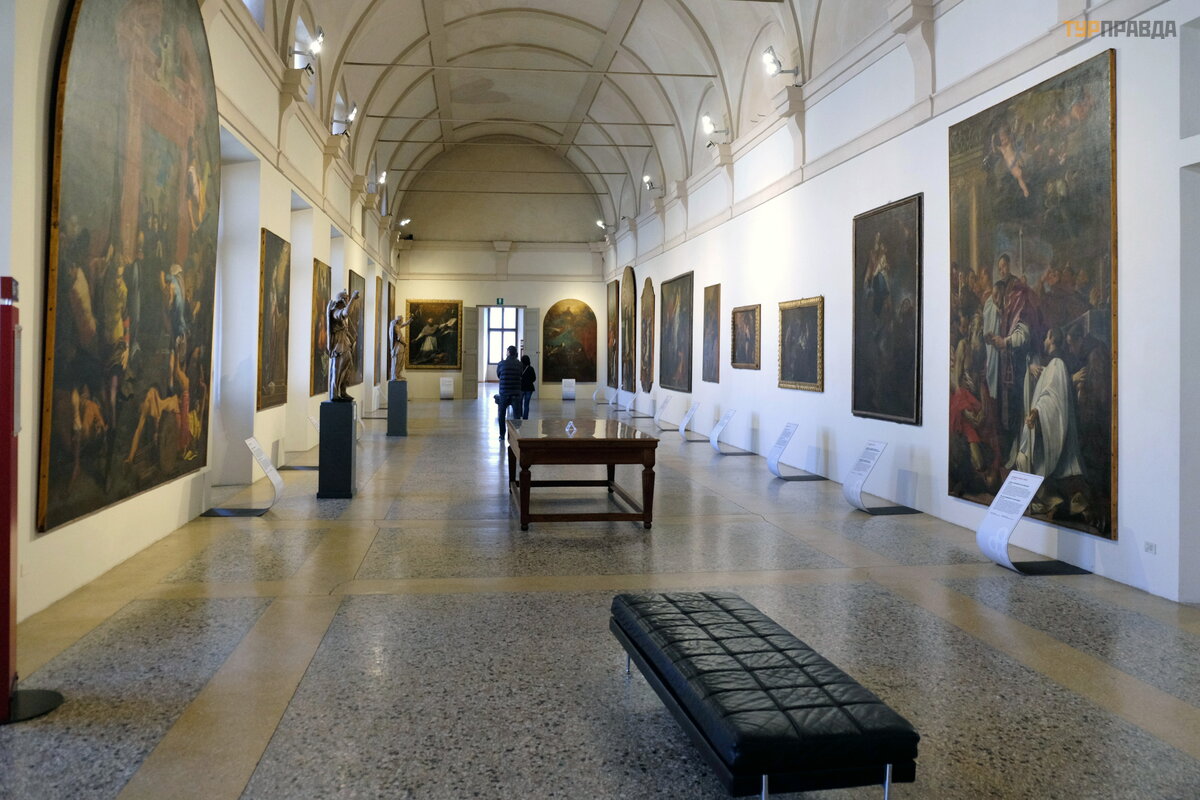
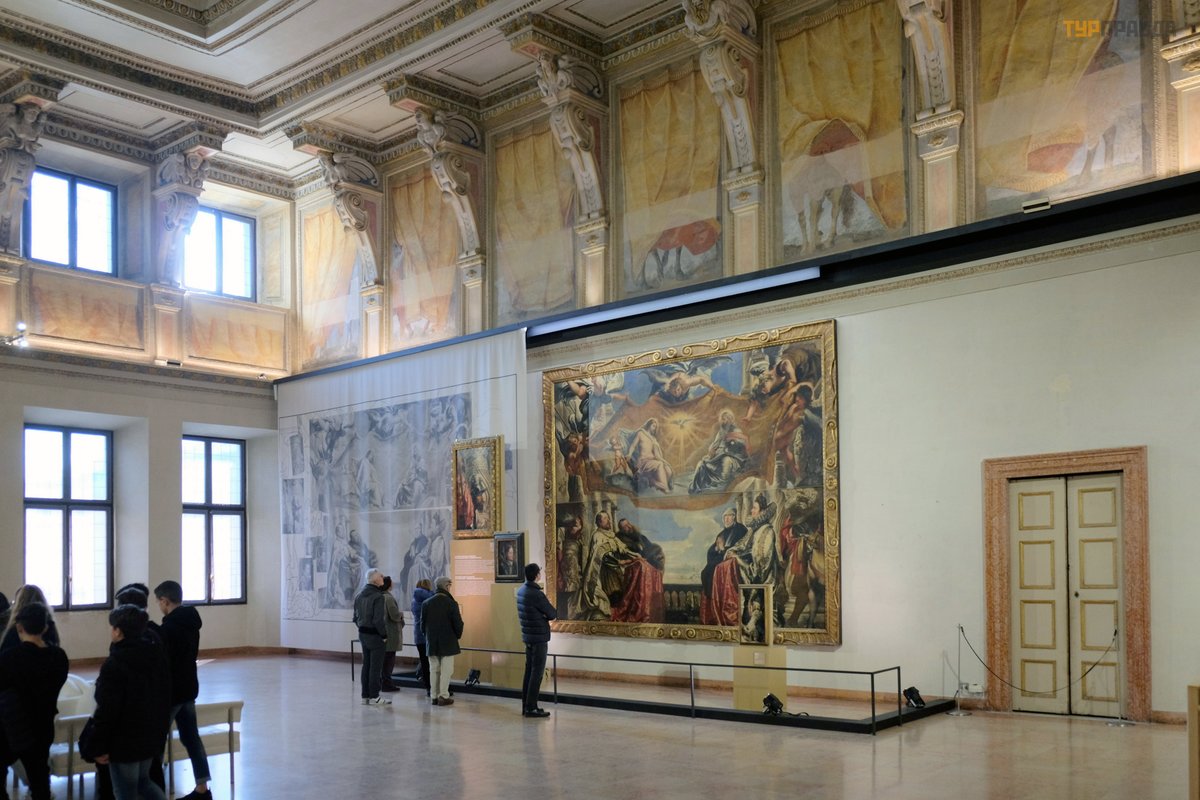
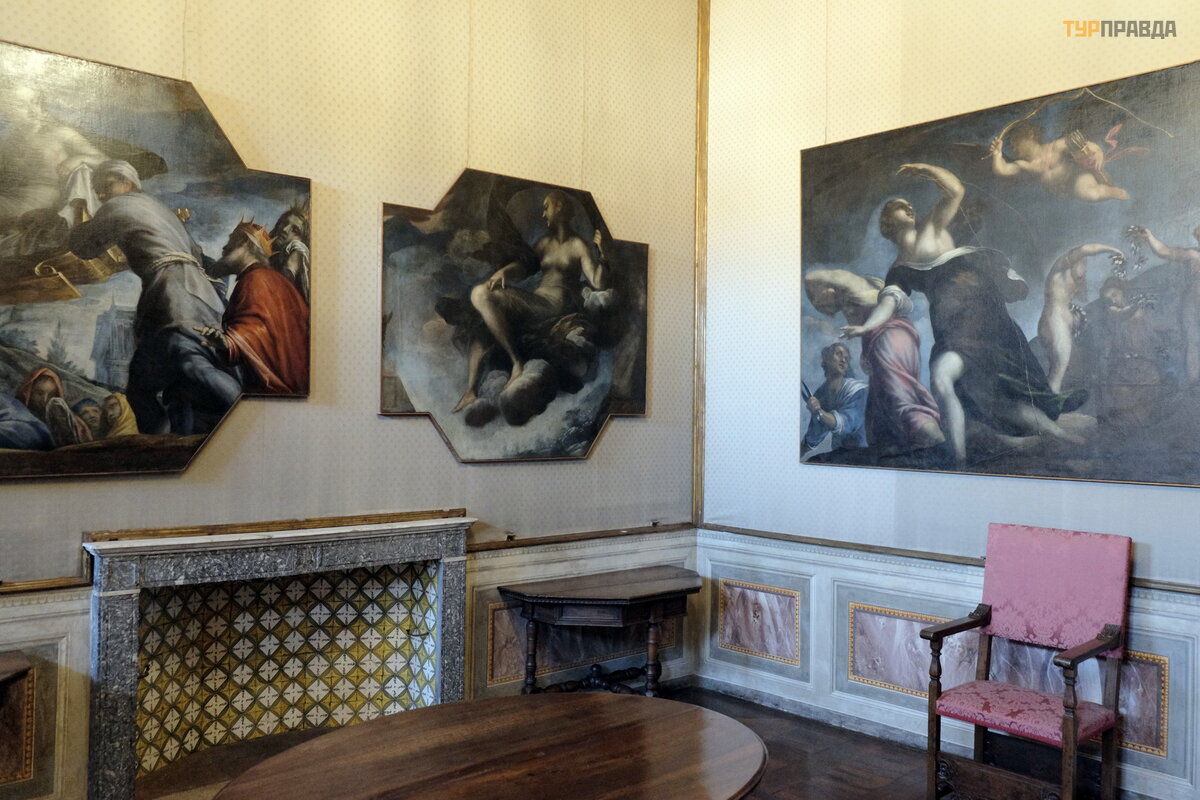
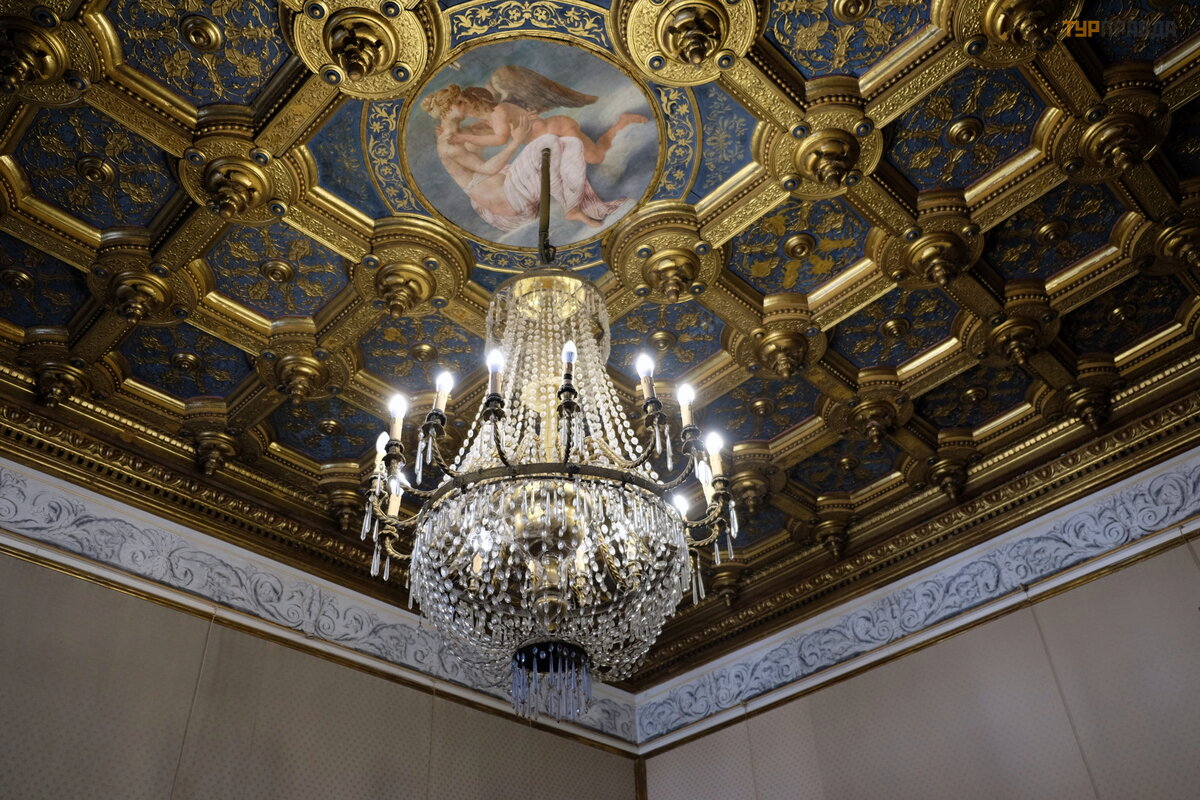
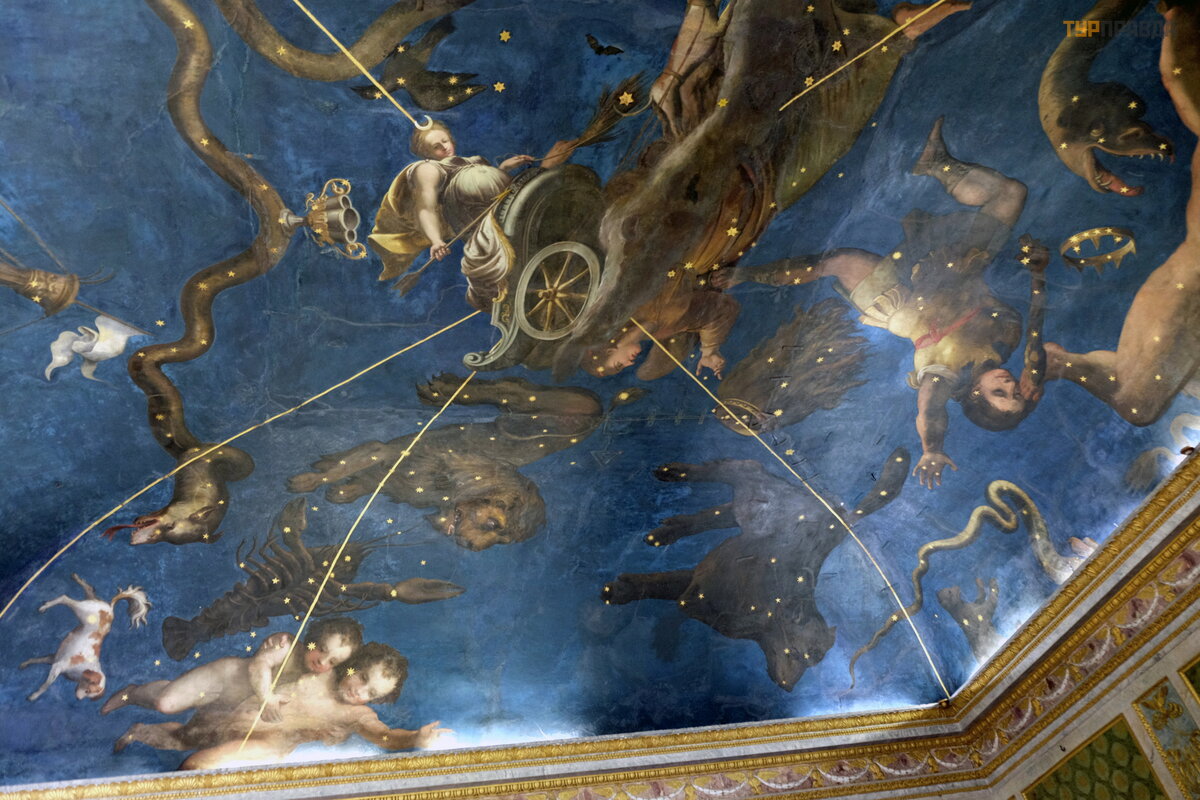
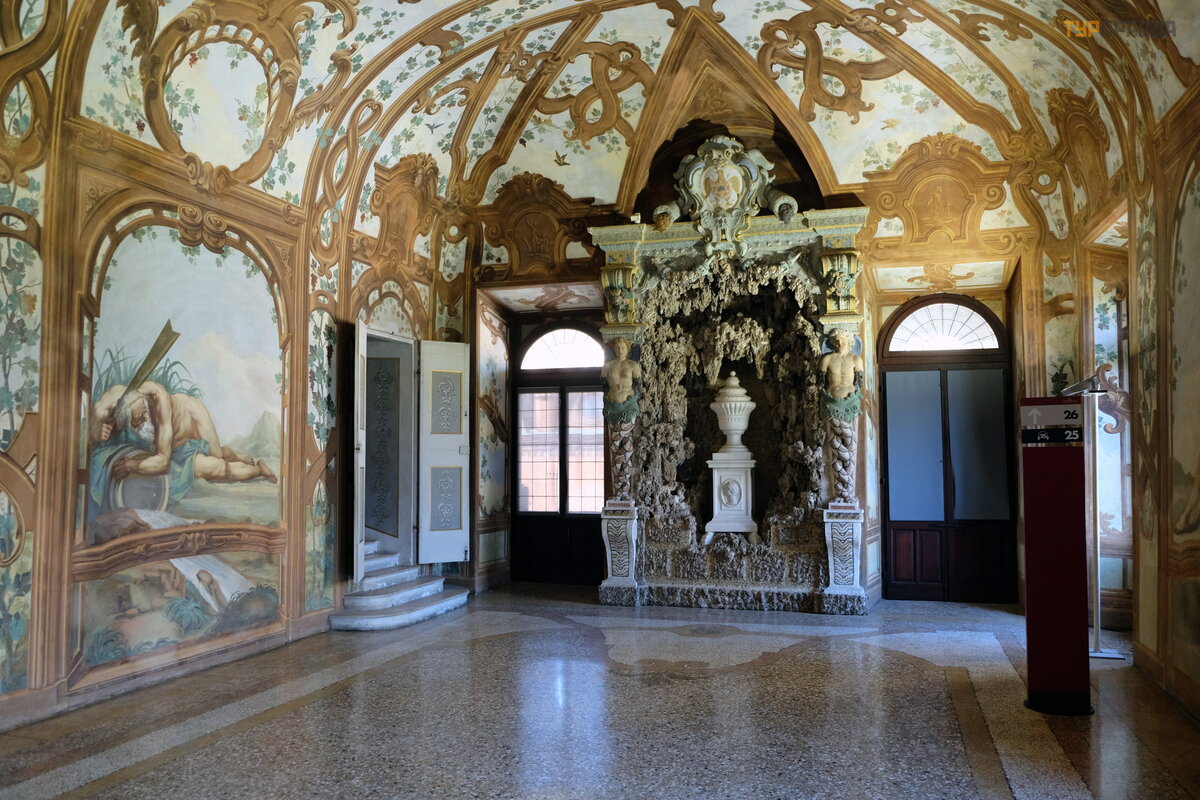
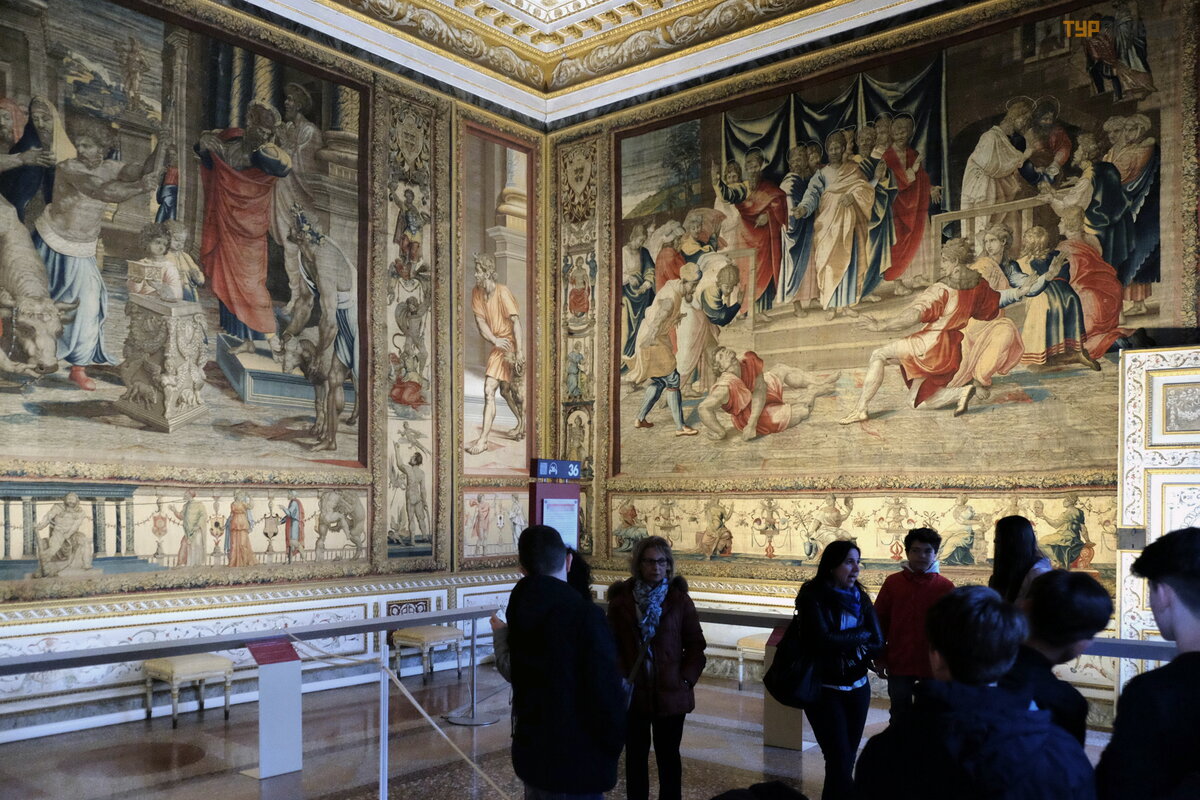
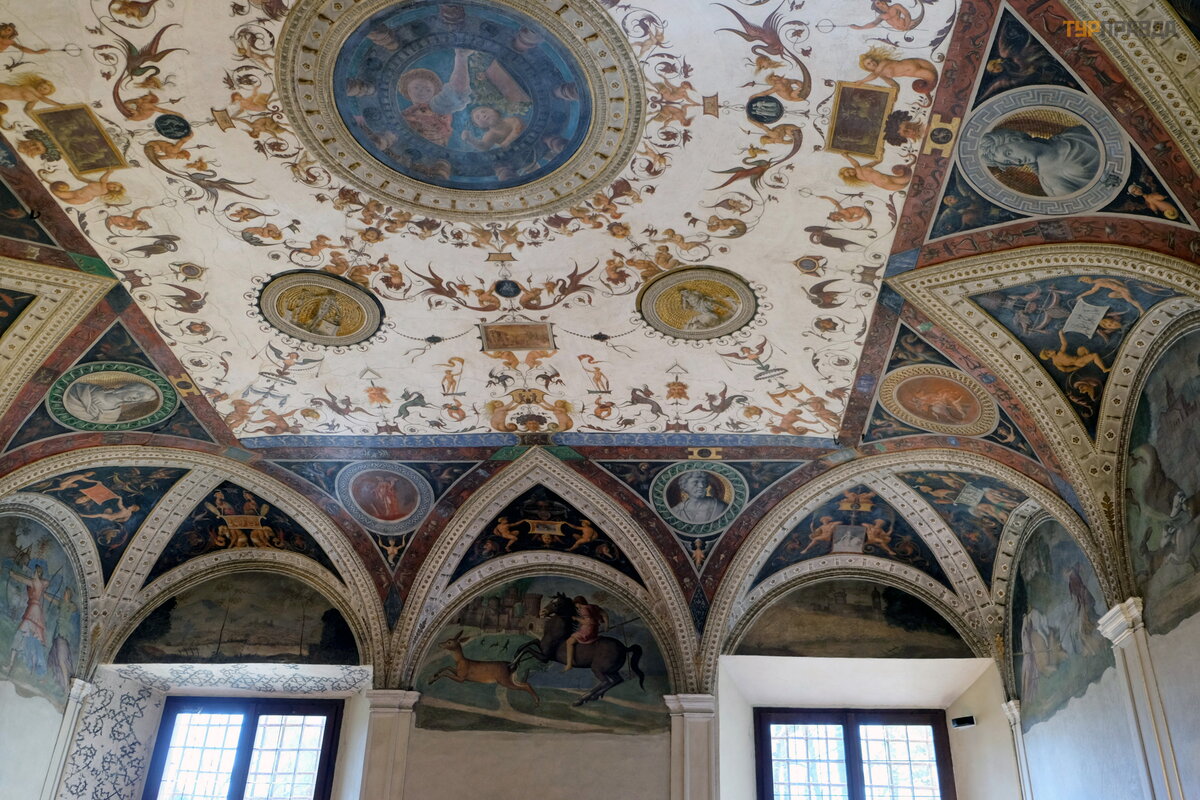
Немного подкрепившись на берегу озера, мы двинулись через весь город смотреть Палаццо. Т. е. летний дворец семьи Гонзага.
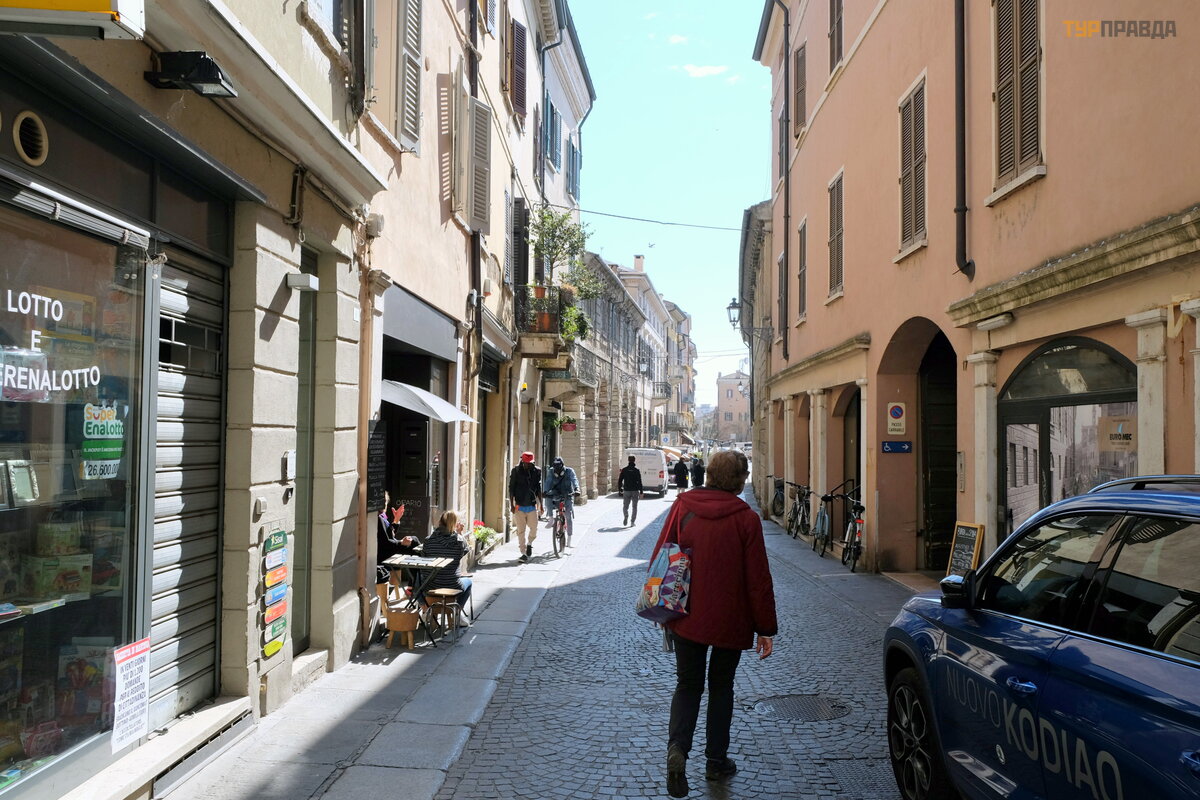
Вот это здание – Дворец коммерции, построено всего в 1913 г. Великолепный образец неороманского стиля:
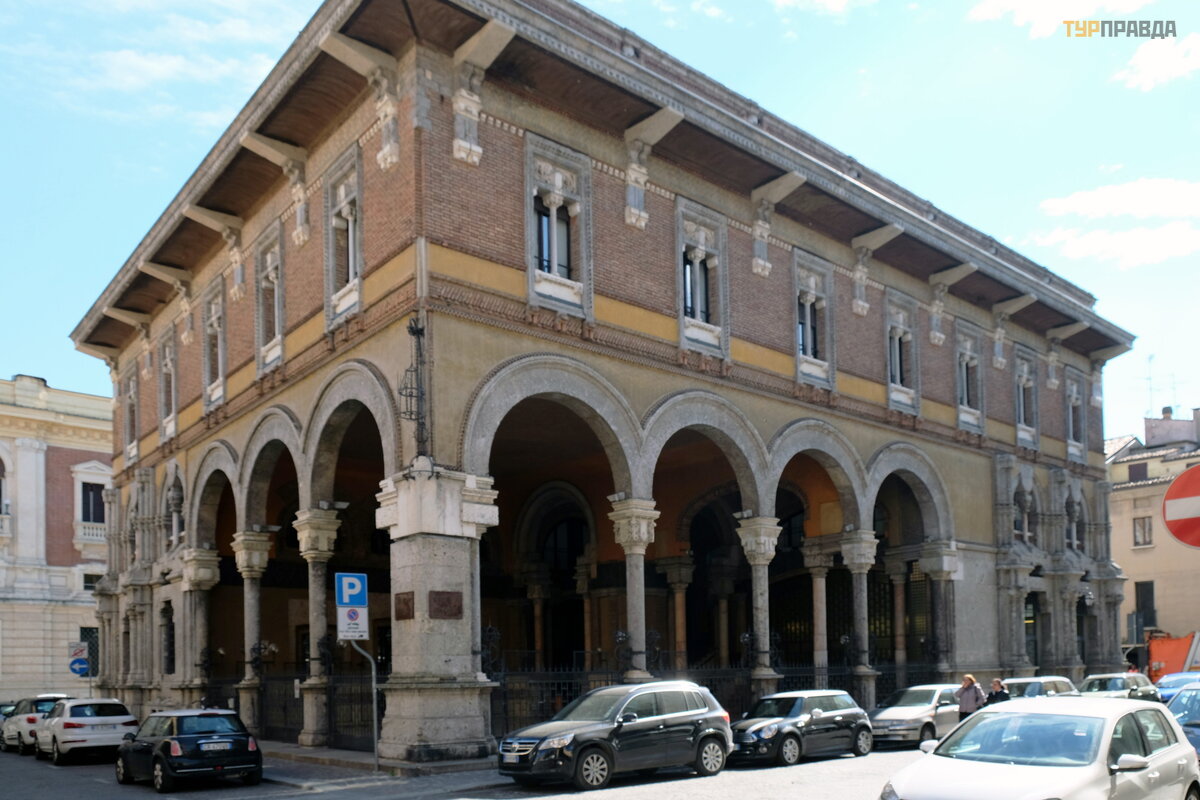
По дороге минуем старинную кампаниллу:
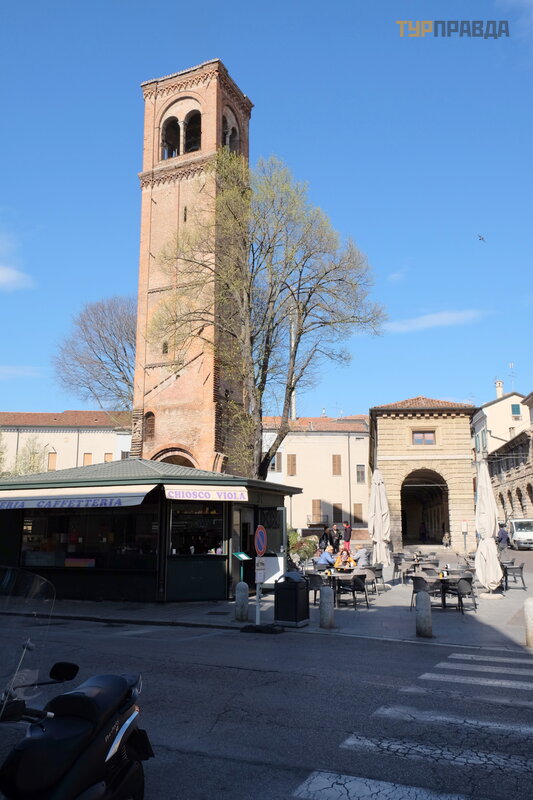
Внизу бывший канал, когда-то улицы Мантуи соединялись на манер Венеции. Арки и колонны, которые вы видите внизу – это бывший Рыбный рынок, построенный по проекту Джулио Романо в 1536 году:
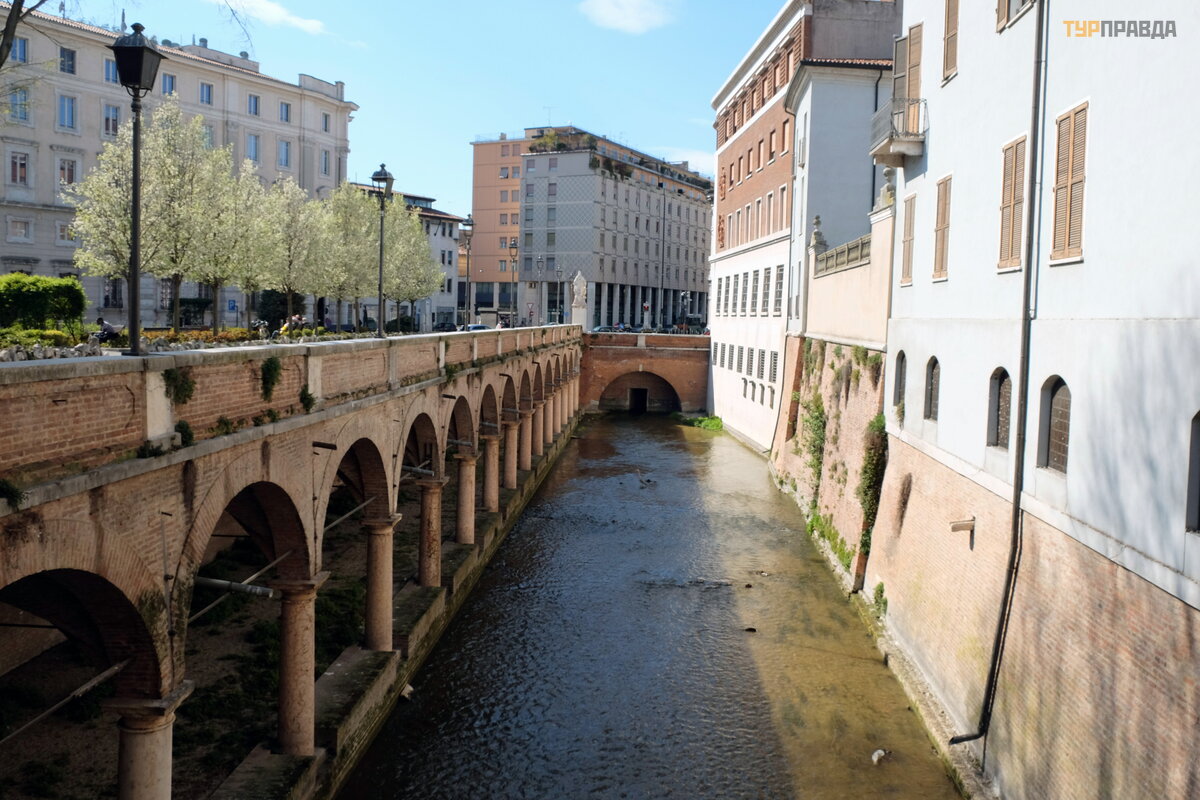
Идем мимо церкови Сан-Себастьяно, построенной между 1460 и 1529 годами по проекту Леона Баттиста Альберти:
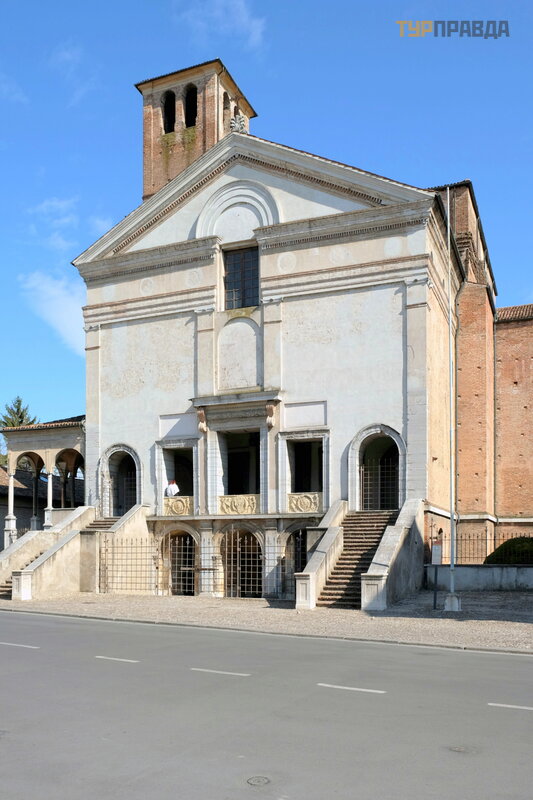
И вот уже Палаццо Те. И строительством, и росписью, и отделкой занимался один-единственный человек – Джулио Романо (1492-1546), любимый ученик и помощник Рафаэля. Строительство здания началось в 1525 году и закончилось спустя 10 лет в 1535 году. Палаццо представляет собой квадратное сооружение, внутри которого находится сад.
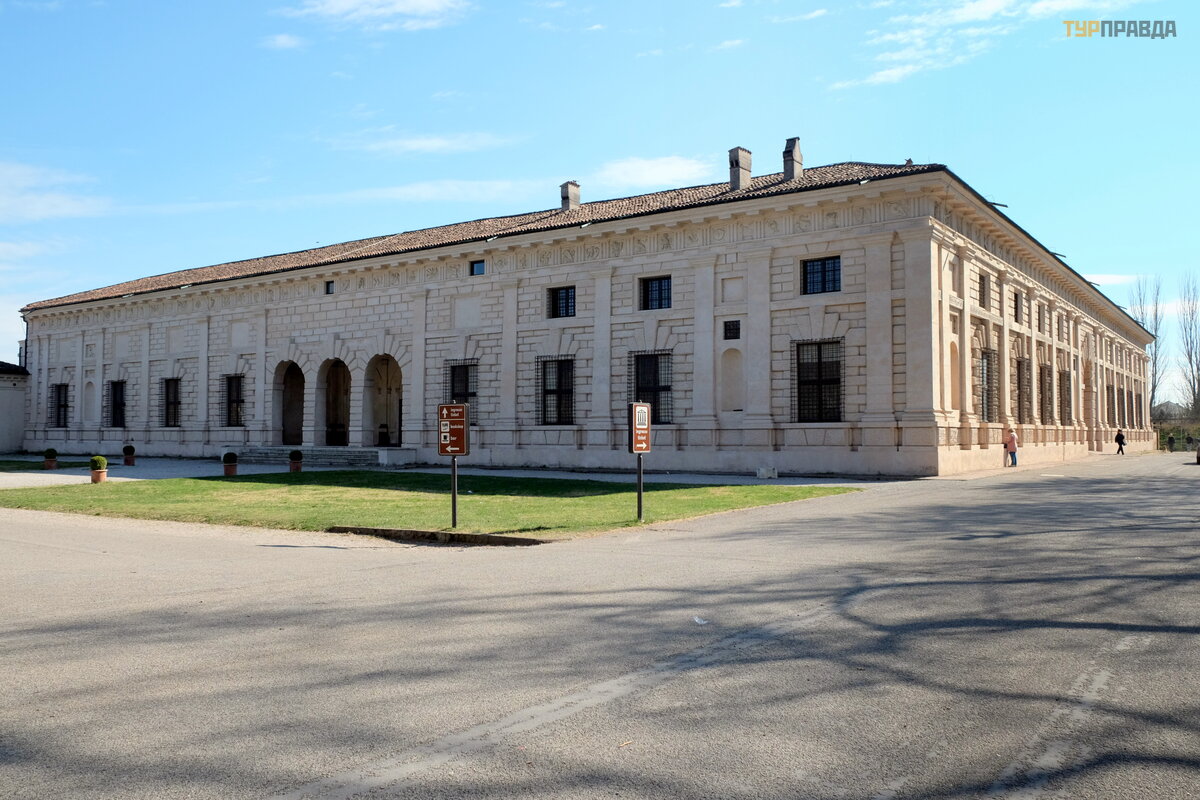
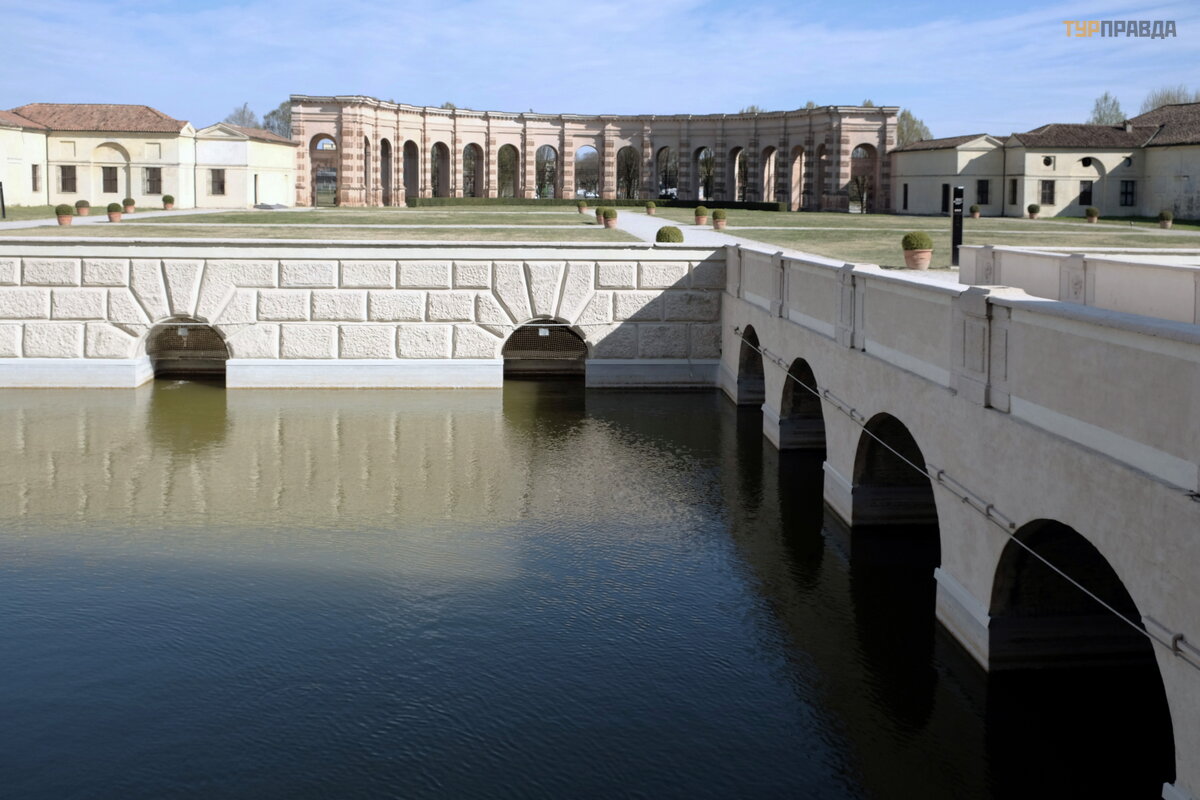
Первый яркий зал называется Salone dei Cavalli, то есть Салон лошадей. Федерико II, да и все Гонзага, видно, что Гонзага лошадок любили, хотя зрелище довально странное.
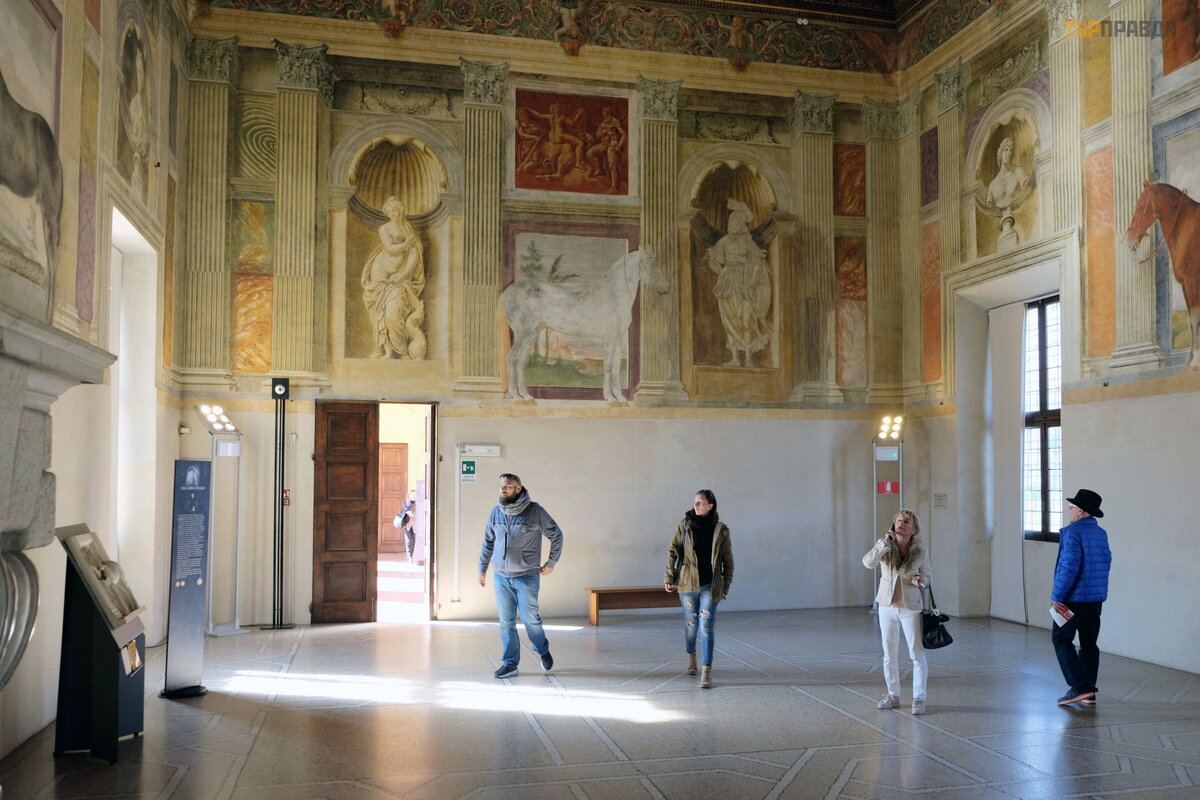
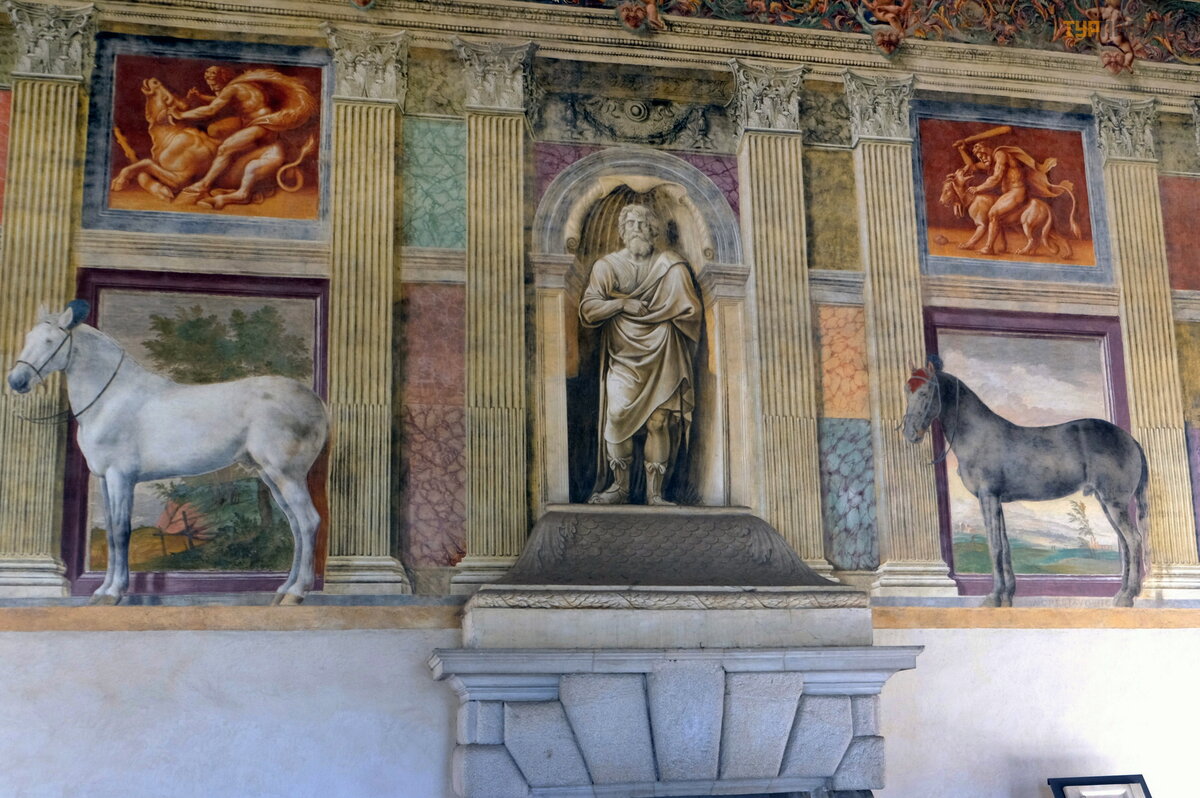
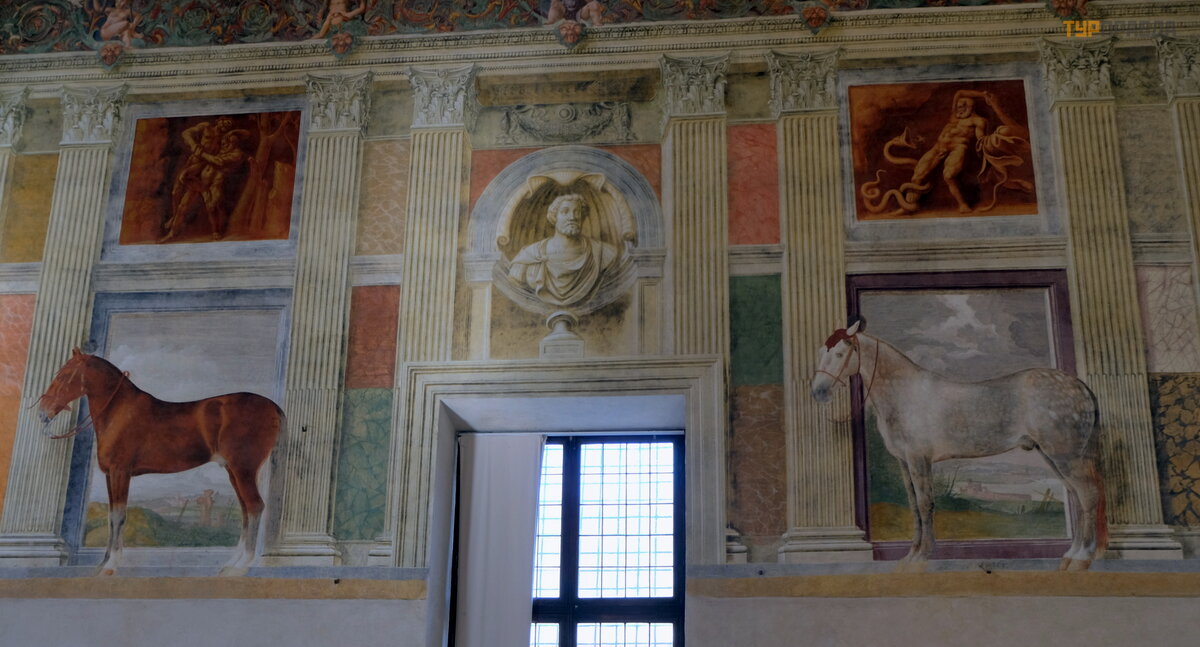
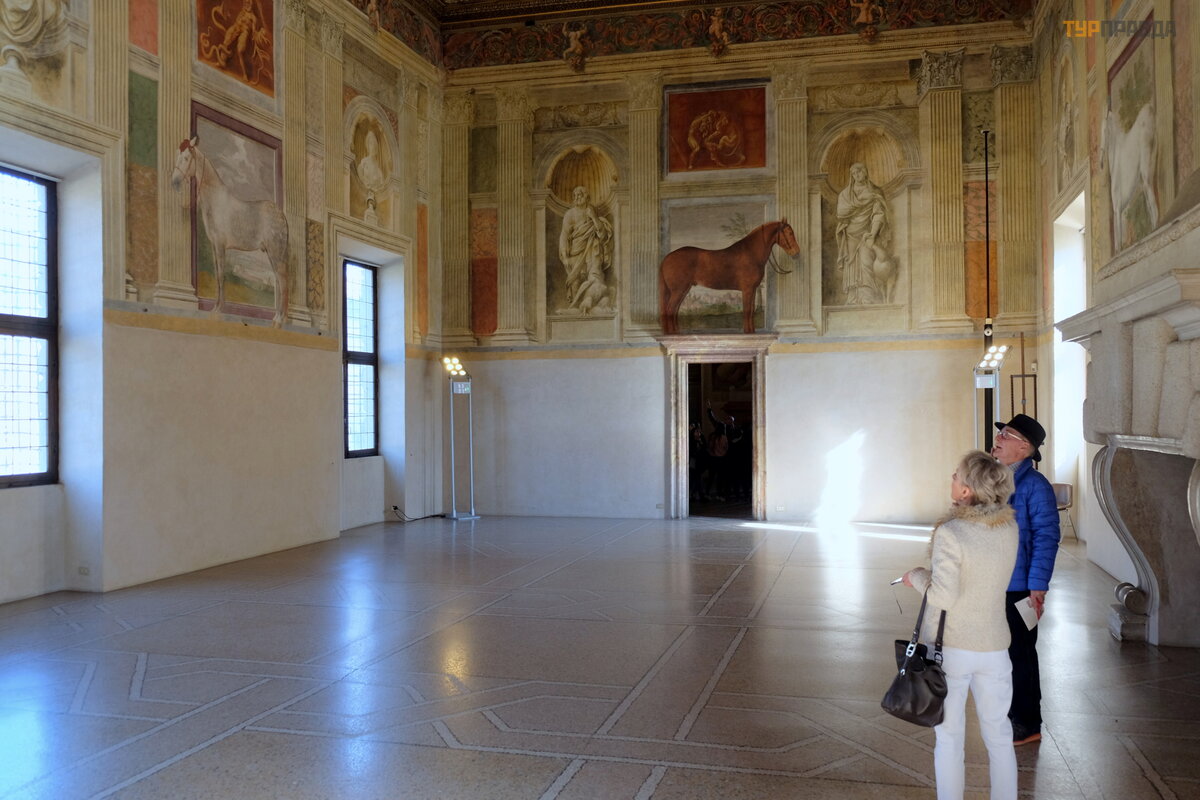
Зал Гигантов. Фрески рассказывают о восстании титанов против Зевса-Юпитера и их, титанов, уничтожении олимпийским владыкой. Боги и богини наблюдают с Олимпа.
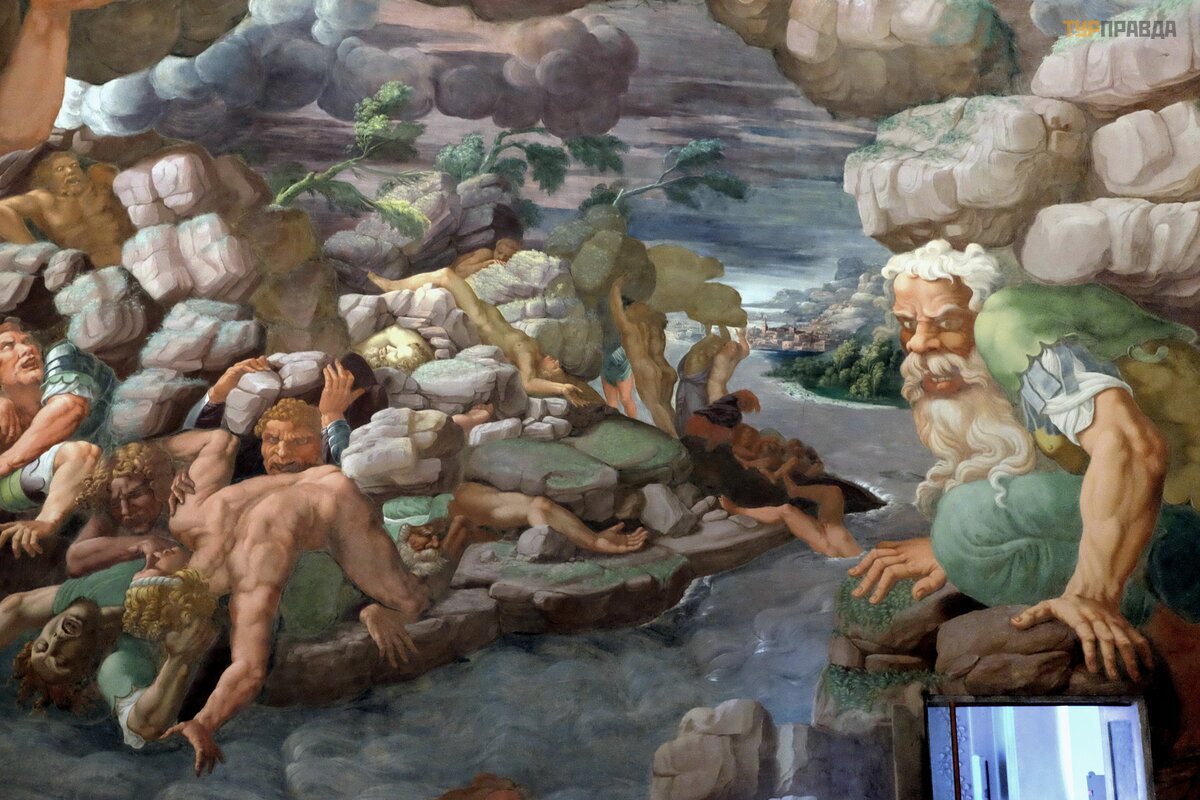
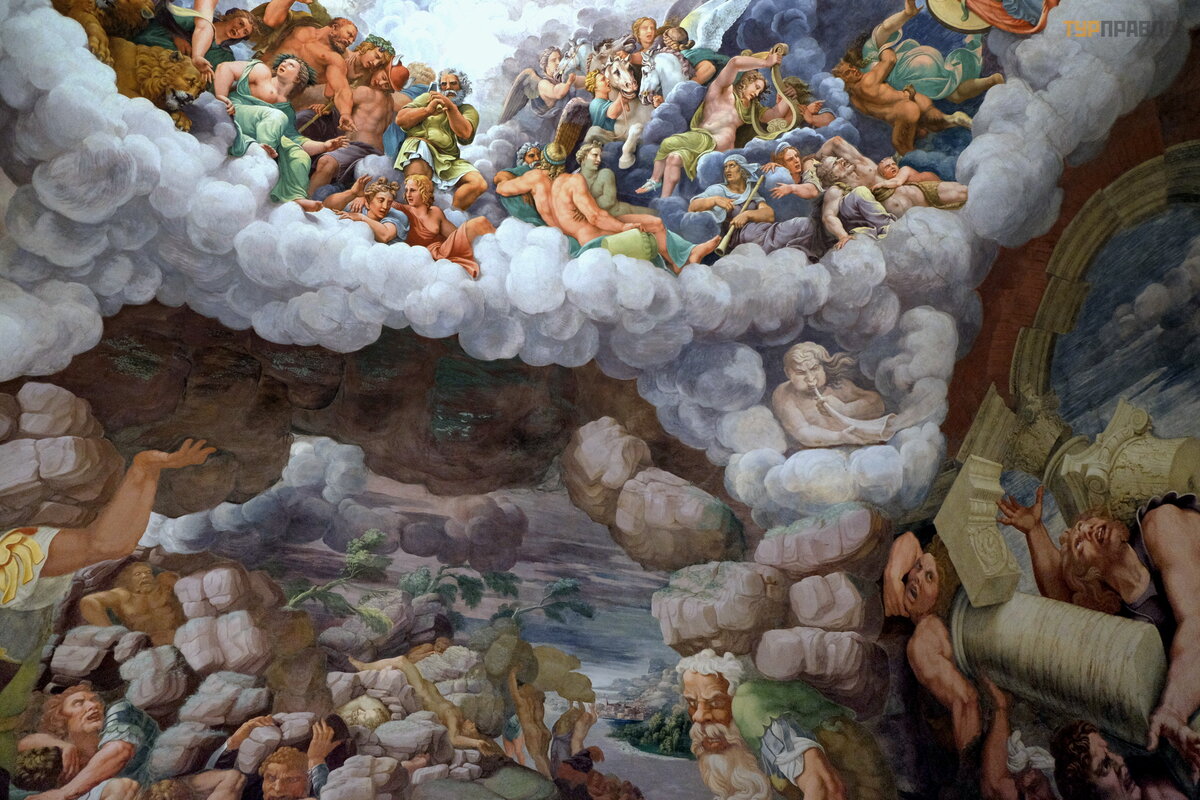
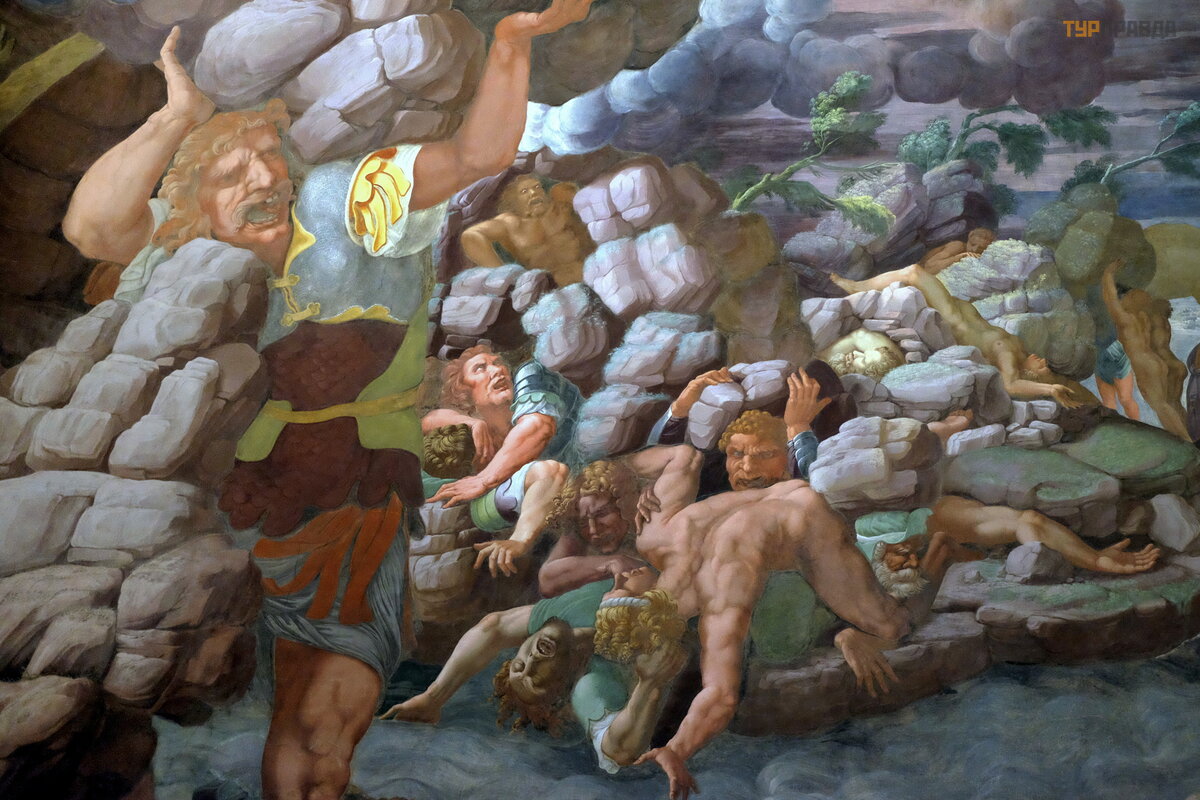
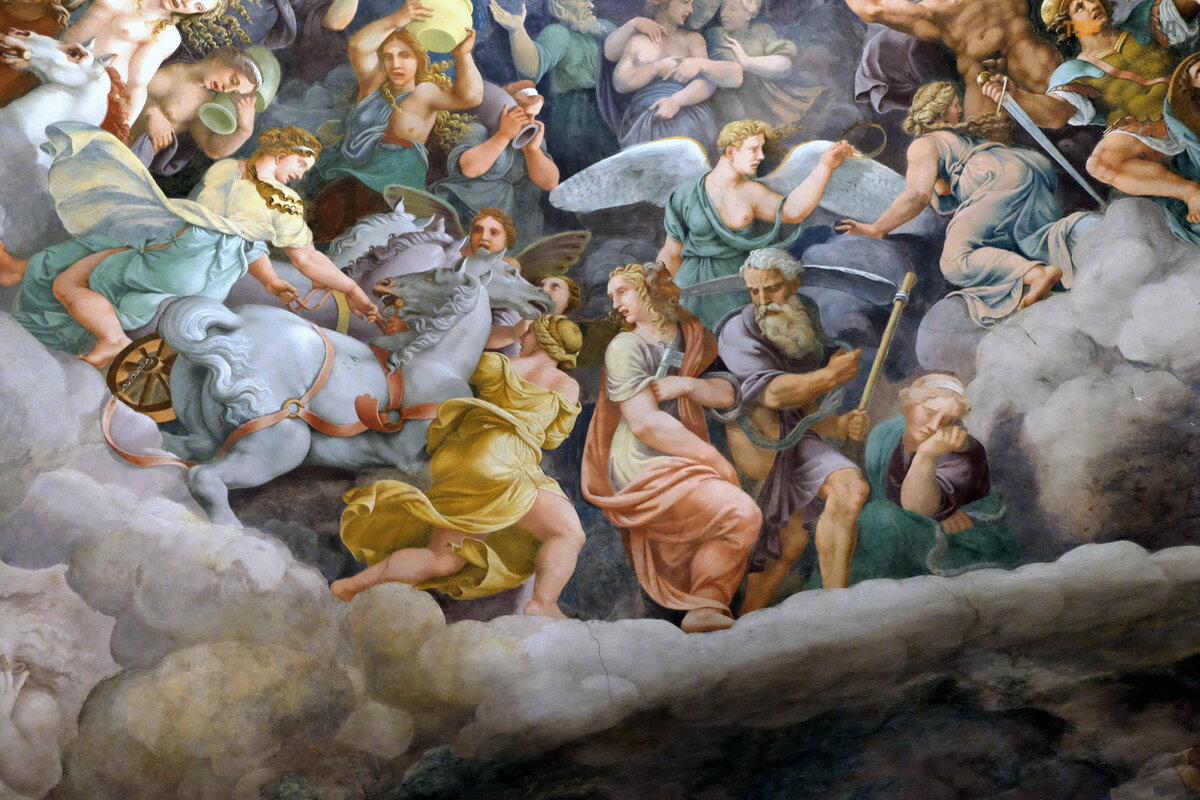
Самый скандальный зал – Зал Психеи, где показаны сцены пира олимпийских богов. Зал долго был закрыт для посетителей.
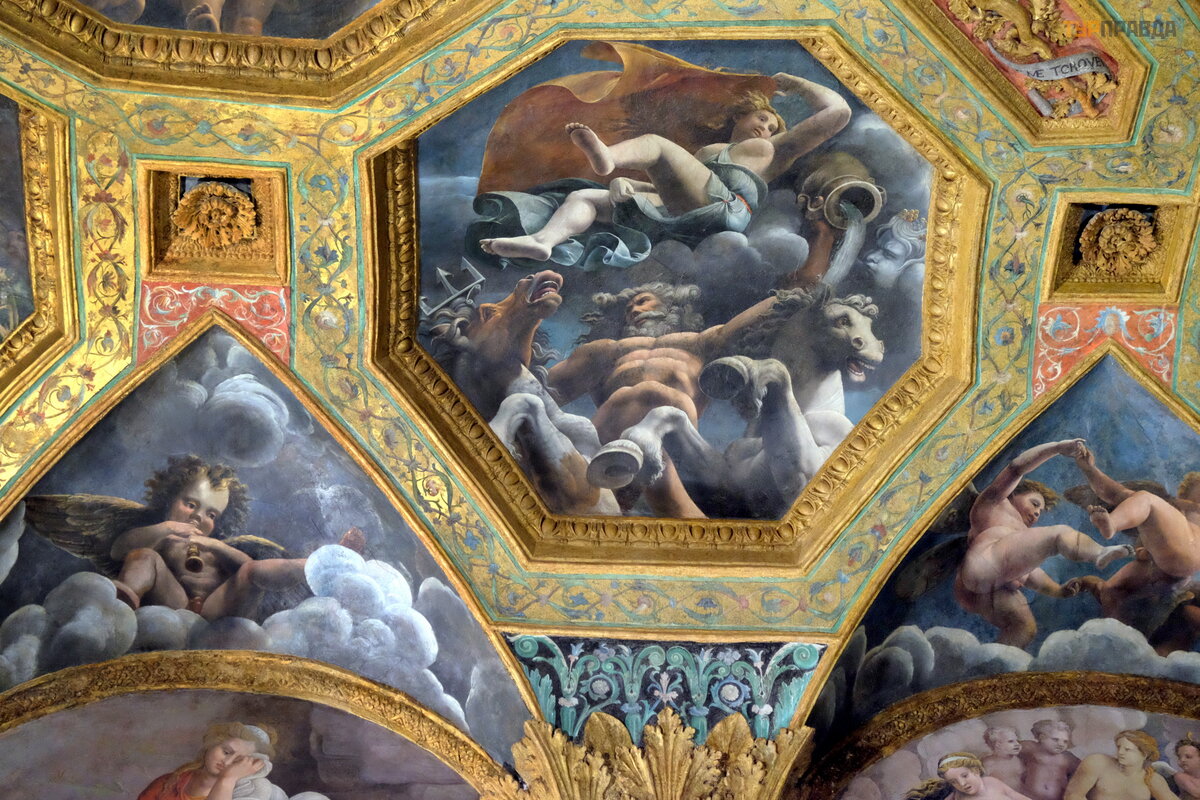
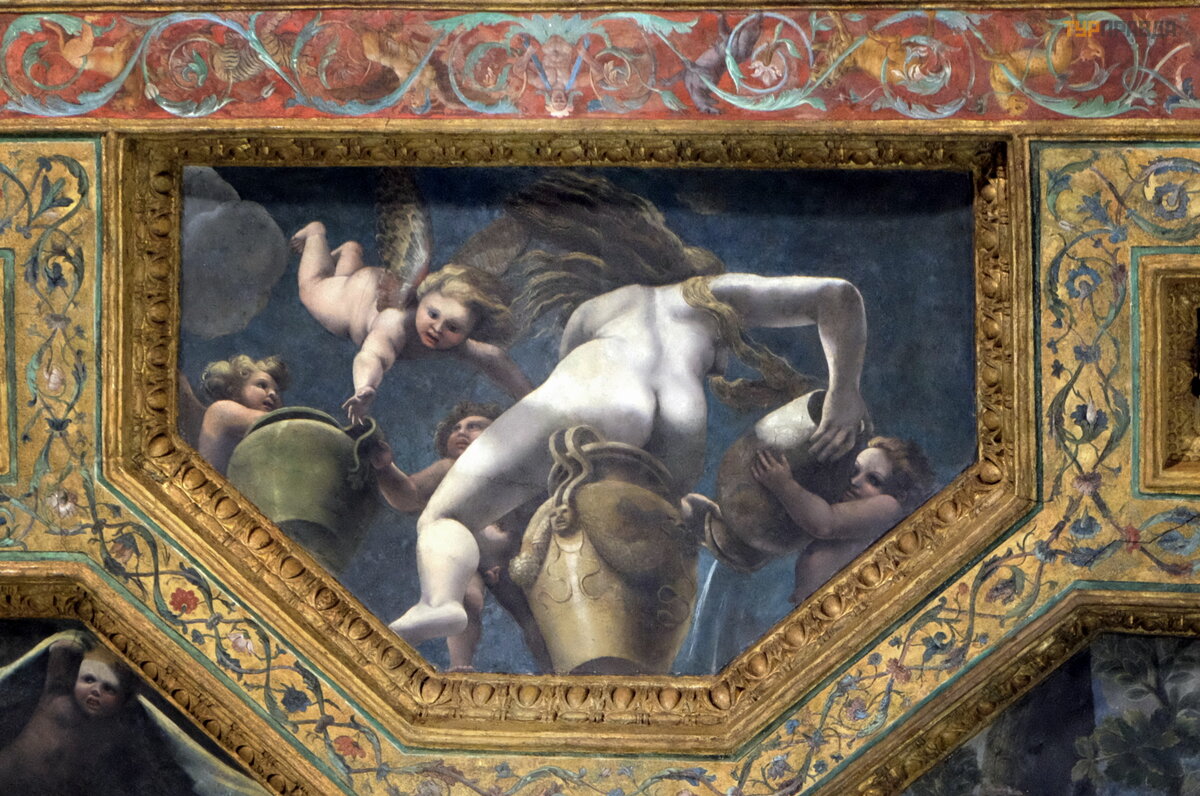
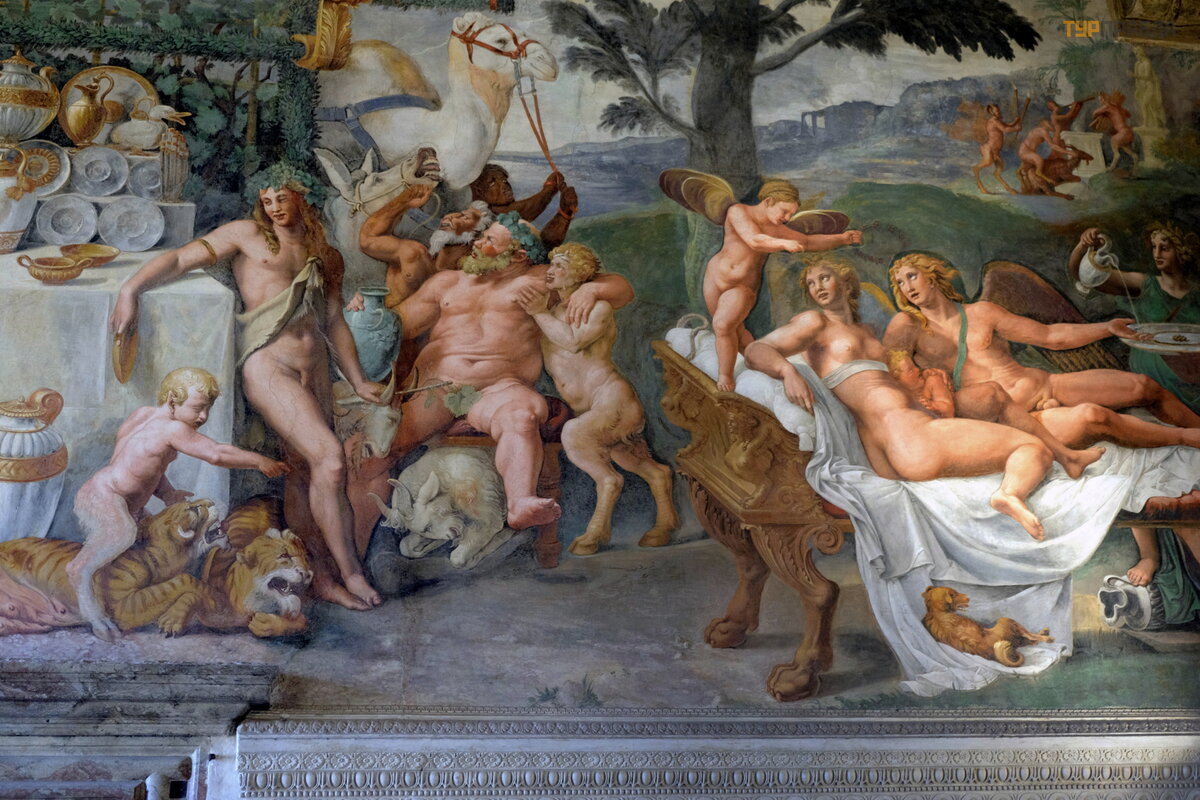
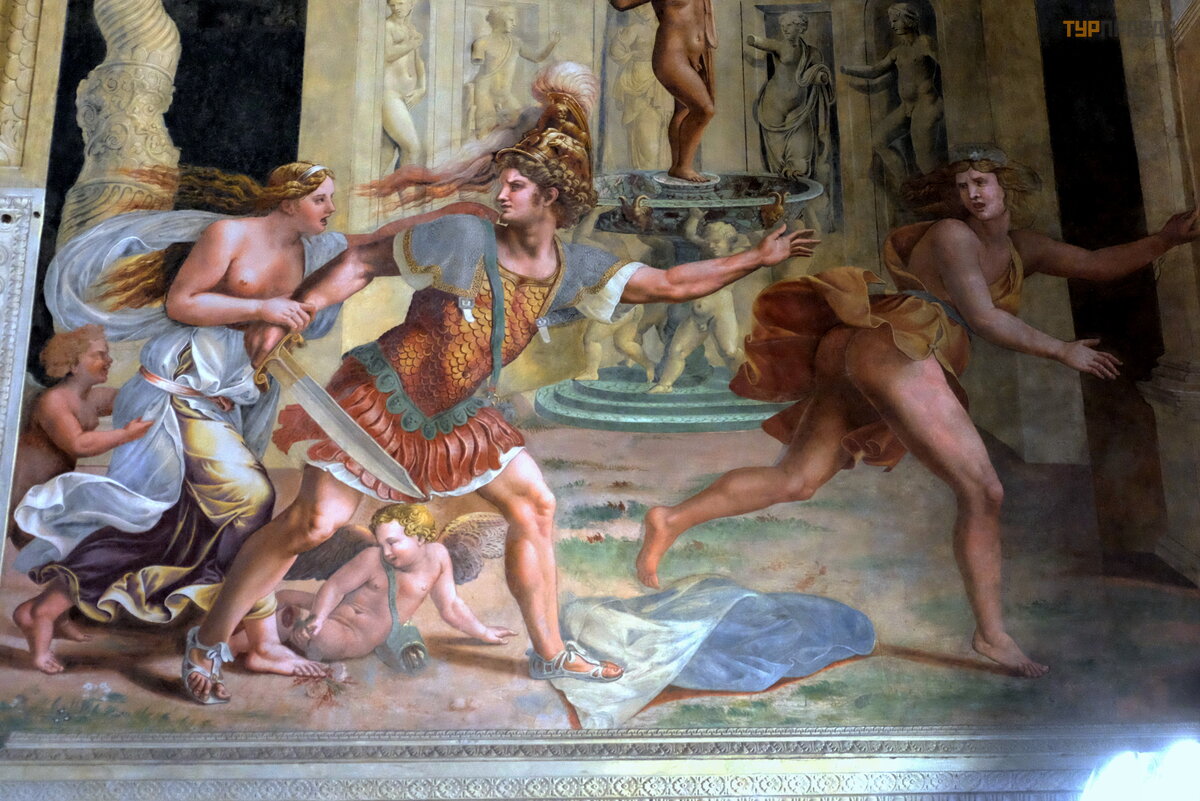
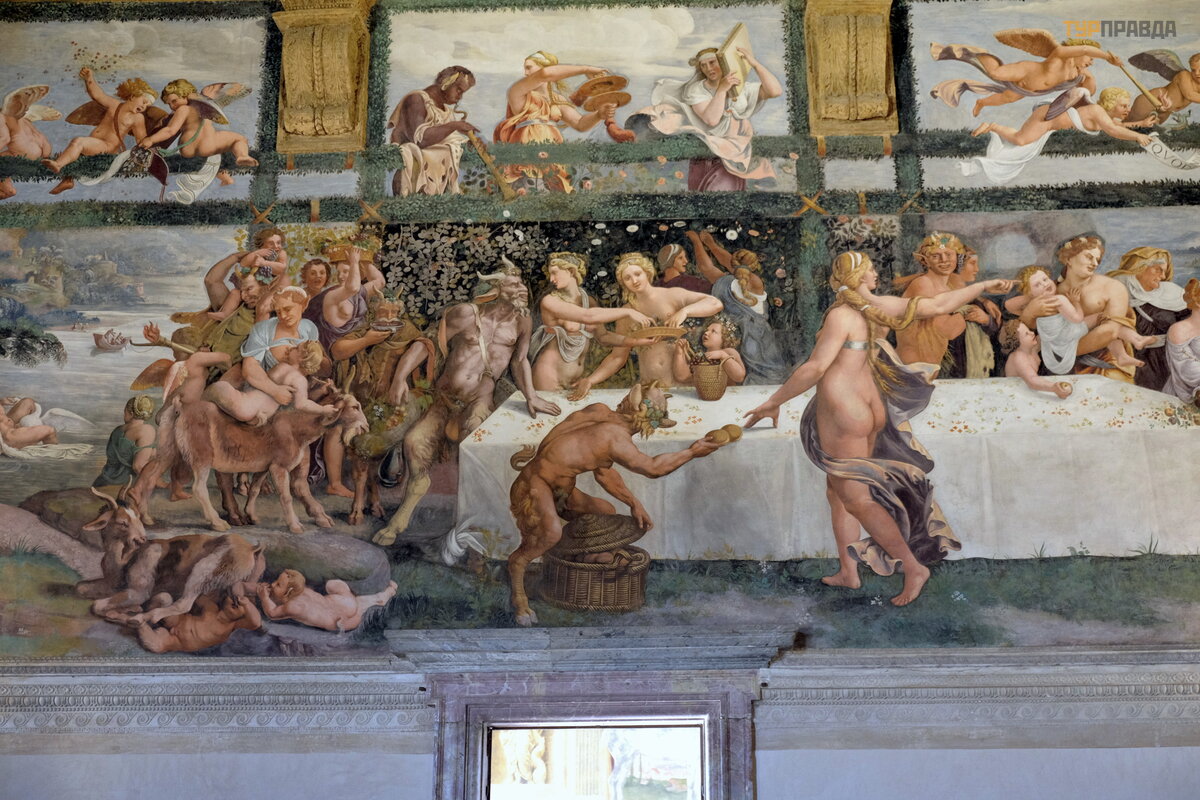
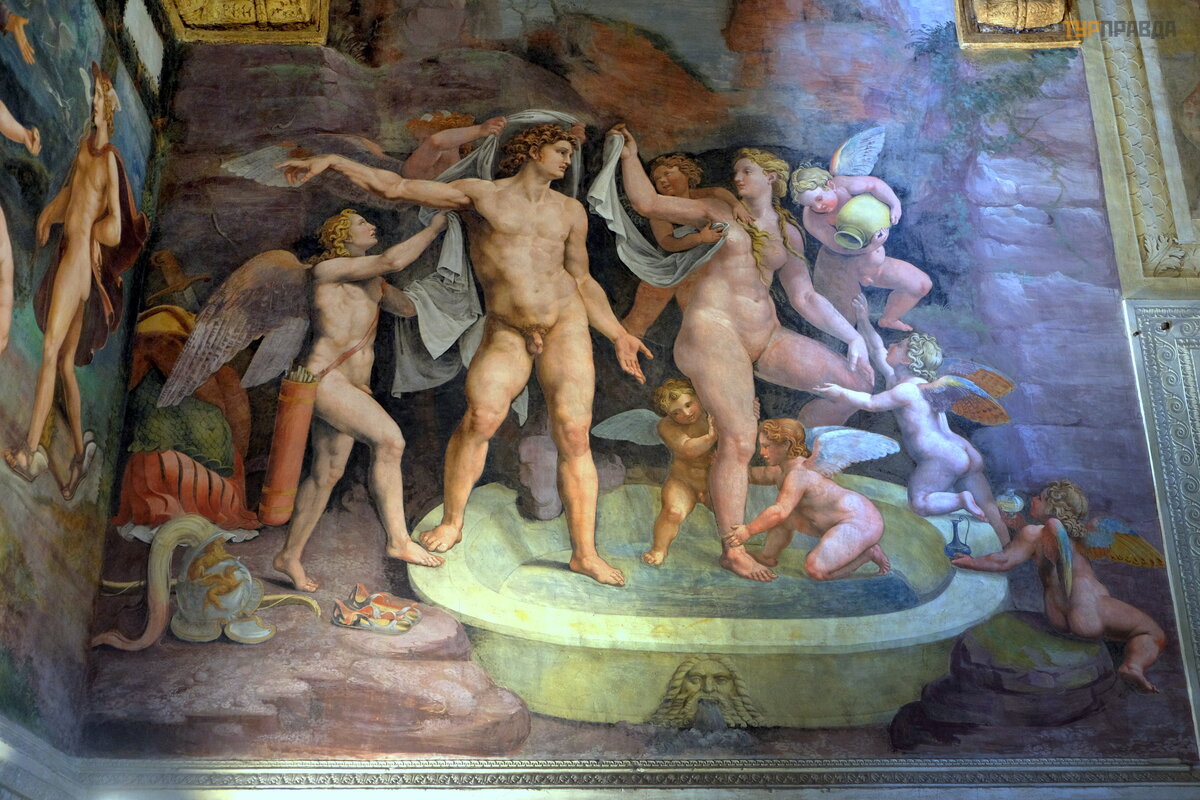
Вот на этом я сегодня и закончу рассказ о втором дне путешествия.
Весеннее путешествие по Италии. Часть 3. Брешиа > > >
A spring trip to Italy. Part 1. Trento >>>
On the second day, we took a familiar route to the station and after 40 minutes we were already in Mantua, familiar to us from the tragedy "Romeo and Juliet" ("To light your path to Mantua with the fire of a torchbearer").
Today, Mantua is a city surrounded by lakes and the Mincha River, in the Middle Ages, the river was dammed up specifically for the purpose of defense, earlier Mantua was an island at all, now several bridges, including a railway bridge, connect with the "mainland".
Mantova is a very picturesque city, in 2018, according to a study by Italian ecologists, it was recognized as the greenest city in Italy.
City sidewalks are often covered galleries:

We approach the building of the public theater in the neoclassical style, built in 1818-1822:

We met funny kids on the way:

The Basilica of Sant'Andrea, located in Piazza Mantegna, designed by Leon Battista Alberti between 1472 and 1494. :

Sacred vases with the blood of Christ are stored here - it was brought to his native city by the Roman centurion Longinus, who, according to legend, pierced the side of the crucified Christ with a spear. For the sake of storing two ampoules with the blood of Christ, the Basilica of Sant'Andrea was erected. Andrea Mantegna, the greatest painter of the Renaissance, is also buried here.
After Alberti's death, the temple was completed by several architects, including the famous Juvarra. The temple turned out to be majestic, but somewhat disharmonious - due to the inconsistency of its various parts and due to the changes that different architects made during construction,
as well as departures from Alberti's original design.

A more holistic and artistically expressive impression is made by the interior of the basilica, which is considered Alberti's masterpiece:





Nearby on Piazza Erbe (Grass Square) is the Rotunda of St. Lorenzo (Rotonda di San Lorenzo), which has a noticeable resemblance to the Church of the Holy Sepulcher in Jerasulim. This is the oldest surviving church in Mantua, it was built in 1082.

The Palazzo della Ragione adjoins the rotunda with a tower and an astrological clock. The clock tower was built in 1473 by Luca Fancelli,
and in 1493, an amazing clock was installed on it by Bartolomeo Manfredi, a mechanic, mathematician and astrologer at the court of Gonzaga. The clock has undergone several stages of restoration work and is still in operation. They not only show the time, but also the month, the phases of the moon, and also indicate the position of the planets and zodiacal constellations.

If the Church of Sant'Andrea is considered the most beautiful cathedral of Mantua, then the main Cathedral is the Cathedral of San Pietro. It was built in the 12th century and is a building in the Romanesque style. Later - in 1395-1401. - elements in the Gothic style were added to the facade. In the 15th century, after a strong fire, the building was reconstructed and became similar to the Basilica of St. Peter in the Vatican. And in the 18th century, the original appearance of the multi-colored marble facade was replaced with white marble. The cathedral is located in Piazza Sordello, not far from Palazzo Ducale.


View from another angle:

Of the surviving works of art, it is worth noting the sarcophagus in the style of early Christianity, the frescoes of the 14-15th century, the chapel of Our Lady and the sacristy. Inside the cathedral, the altars are decorated with works by famous artists of Mantua.





Not far from the cathedral there is a tourist attraction - "Rigoletto's House".

In front of the house of the Verdi opera singer himself:

There are many beautiful historical buildings in Piazza Sardello. Here,
Palazzo Bonacolsi (Bonacolsi) or Castiglioni (Castiglioni), built in 1281. Initially, it belonged to the counts of Bonacolsi - these were the first lords of the city of Mantua, who did not last long in this capacity. It was with their exile that the dominion of the Gonzaga began in Mantua. Around 1700, the building passed to the Castiglione family.
To the left of it is a real medieval building, and even with a tower (in the woods). This is Palazzo Podesta. Torre della Gabbia (Italian: Torre della Gabbia) is a medieval tower located on Via Cavour. The tower was built in 1281 by the Aserbi family, although some sources claim that the tower was built in 1302 by the architect Bonacolsi.

On the opposite side of the Piazza Palazzo Ducale, founded in the 13th century. This is a whole complex of buildings from different eras. The whole complex includes about 500 rooms, the total area is 34 thousand square meters. m. The oldest building is exactly what
whose facade overlooks Piazza Sordello. It is called the Palazzo del Capitano and recalls the time when the first Gonzaga bore the title of "Captain del Popolo" - "Captain of the People".

Castle of St. George (in Italian Castello San Georgio) is located at the entrance to Mantua and is part of the huge complex of Palazzo Ducale (in Italian Palazzo Ducale).

This is a large red stone structure that is shaped like a square with three gates and four watchtowers. Like many castles, it is surrounded by a moat, which was filled with water from neighboring lakes, and performed a defensive function, and later became the residence of the Gonzaga family.

The buildings that form the New Court began to be built in 1480, and then rebuilt in 1587-1612.

The Palace Basilica of Santa Barbara, built in 1567-1572. designed by Giovan Battista Bertani. Now closed due to damage from the 2012 earthquake


The most famous room of the Palazzo Ducale is the Camera degli Sposi (Bridal Room), frescoed by Andrea Manteigne 1465-1474. and famous for the high quality of the images, including about 30 portrait figures, mostly of the Gonzago family, as well as for the skillful use of perspective decoys. I must say that it is difficult to inspect this room during the season due to the large crowds of people, and time is limited, but here we were lucky, no one except for a school excursion.



The most famous fresco,
and now the museum is interesting, the frescoes cannot be stolen and sold.









After a little refreshment on the shore of the lake, we moved through the whole city to look at the Palazzo. That is, the summer palace of the Gonzaga family.

Here is the building - the Palace of Commerce, built only in 1913. A magnificent example of neo-Romanesque style:

On the way we pass an old campanile:

Bottom is the former channel,
once the streets of Mantua connected in the manner of Venice. The arches and columns you see below are the former Fish Market built by Giulio Romano in 1536:

We walk past the Church of San Sebastiano, built between 1460 and 1529 by Leon Battista Alberti:

And now Palazzo Te. And the construction, painting, and decoration were carried out by one single person - Giulio Romano (1492-1546), Raphael's favorite student and assistant. Construction of the building began in 1525 and ended 10 years later in 1535. The palazzo is a square building with a garden inside.


The first bright hall is called the Salone dei Cavalli, that is, the Horse Salon. Federico II, and indeed all the Gonzagas, it is clear that the Gonzagas loved horses, although the sight is rather strange.




The Hall of the Giants. The frescoes tell about the revolt of the titans against Zeus-Jupiter and them, the titans, being destroyed by the Olympian ruler. Gods and goddesses watch from Olympus.




The most scandalous hall is the Hall of Psyche, where scenes of the feast of the Olympian gods are shown. The hall was closed to visitors for a long time.






This is where I will finish the story of the second day of the trip today.
A spring trip to Italy. Part 3. Brescia >>>





































































































































